
- Cars for Sale
- Research & Reviews
- News & Videos
- Sell Your Car
- Sign in with Google
- Sign in with Facebook
- Sign in with Apple

Does Cruise Control Save Gas?
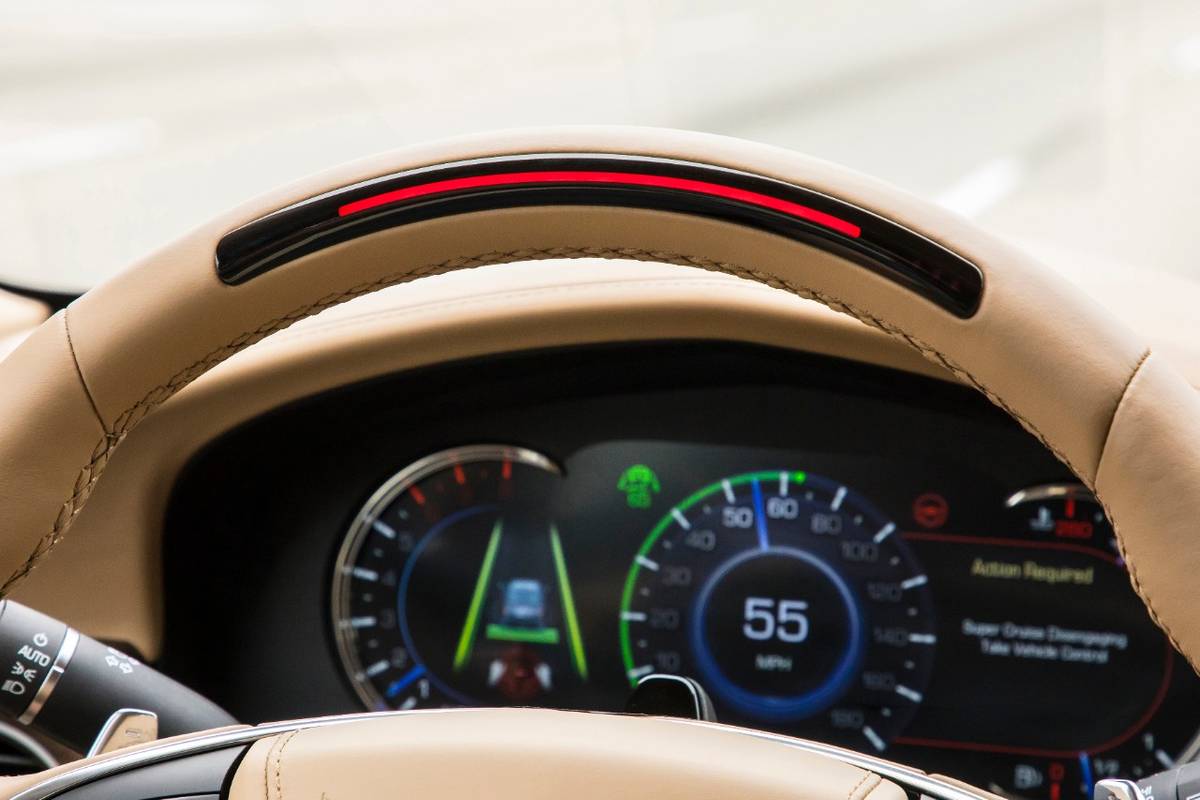
By Rick Popely
Is cruise control helpful for fuel efficiency? In a word, yes, though there isn’t much recent research that quantifies just how much it can save. Eliminating or reducing the number of times a vehicle slows down and then accelerates on the highway keeps the engine and transmission operating in their most efficient modes and, as a result, fuel economy will be higher when cruise control maintains a steady pace.
Related: Which Cars Have Self-Driving Features for 2020?
Notable highlights
- ${price_badge()}
- ${battery_badge()}${ev_report_link()}
- ${hot_car_badge()}
- ${award_badge()}
- ${cpo_badge()}
- ${href_to_vdp()}
${price_badge_description}
The EV Battery Rating is based on this vehicle's current expected range relative to the vehicles expected range when new. ${battery_badge_text}
Certified cars are manufacturer warrantied and typically go through a rigorous multi-point inspection.
This car is likely to sell soon based on the price, features, and condition.
${award_blurb}
${award_two_blurb}
Shop the 2020 Hyundai Palisade near you

Without cruise control, even the most attentive driver is bound to slow down and then speed up again from time to time. That uses more gas.
In addition, someone following 18-wheelers and other slower vehicles, especially when going uphill, might get antsy and floor the throttle to quickly get around those rolling roadblocks — a surefire way to use more fuel. Most cruise control systems allow increasing speeds in 1-mph increments, an approach that will use less fuel than flooring it.
The more often a vehicle changes speeds, the more that economy is likely to suffer. A study by Natural Resources Canada found that varying vehicle speed between roughly 47 and 53 mph every 18 seconds can increase fuel consumption by 20% compared to a steady speed. But because of wide variations among drivers, where a vehicle is being driven and the vehicles themselves, there is no set formula for how much cruise control can save and guidance about fuel economy often is vague.
For example, the federal website for fuel economy information says, “Aggressive driving (speeding, rapid acceleration and braking) wastes gas. It can lower your gas mileage by roughly 15% to 30% at highway speeds.”
The site is even less specific about cruise control: “Using cruise control on the highway helps you maintain a constant speed and, in most cases, will save gas.”
A study by Volvo and the National Renewable Fuel Laboratory released in 2019 concluded that adaptive cruise control can increase fuel economy by 5-7% compared to a vehicle being driven manually. Adaptive cruise control not only maintains a steady speed on the highway, it also gradually slows or speeds up a vehicle to maintain a preset distance from vehicles ahead.
More From Cars.com:
- How Much Car Insurance Do I Need? 5 Key Coverage Considerations
- What to Know Before Taking on a 72- or 84-Month Car Loan
- How Many Miles Is Too Many for a Used Car?
- What Does TPMS Mean?
- More Fuel Economy News
Whether a vehicle has adaptive or conventional cruise control, the system is supposed to recognize when it is going uphill or downhill and adjust the speed accordingly, and that’s an area where results can vary. Some cruise control systems are more aggressive than others when climbing hills and will increase engine speed sooner, induce the transmission to downshift faster and stay in full-speed-ahead mode longer.
In other cases, the cruise control may be less fuel-efficient than a patient driver with a light throttle foot. For example, in driving through the Rocky Mountains with the engine constantly changing speeds and the transmission hunting for the right gear, most drivers forget about fuel economy. They just want to cope with the inclines and traffic, and turning off cruise control might be the better choice.
On a relatively flat road, however, cruise control is likely to reduce fuel consumption.
Cars.com’s Editorial department is your source for automotive news and reviews. In line with Cars.com’s long-standing ethics policy, editors and reviewers don’t accept gifts or free trips from automakers. The Editorial department is independent of Cars.com’s advertising, sales and sponsored content departments.
Latest news
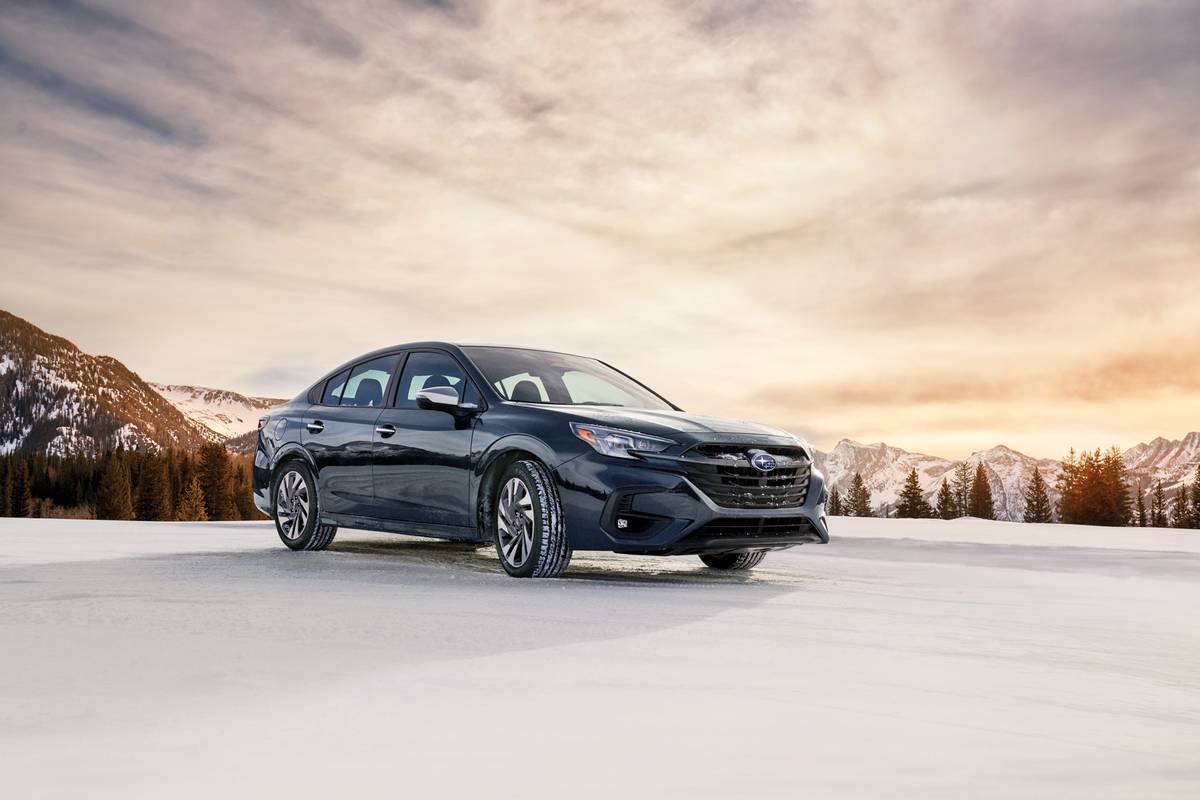
Subaru Legacy Discontinued After 2025 Model Year

2024 Toyota Tacoma Hybrid Review: A Lot More Power, a Little More MPG
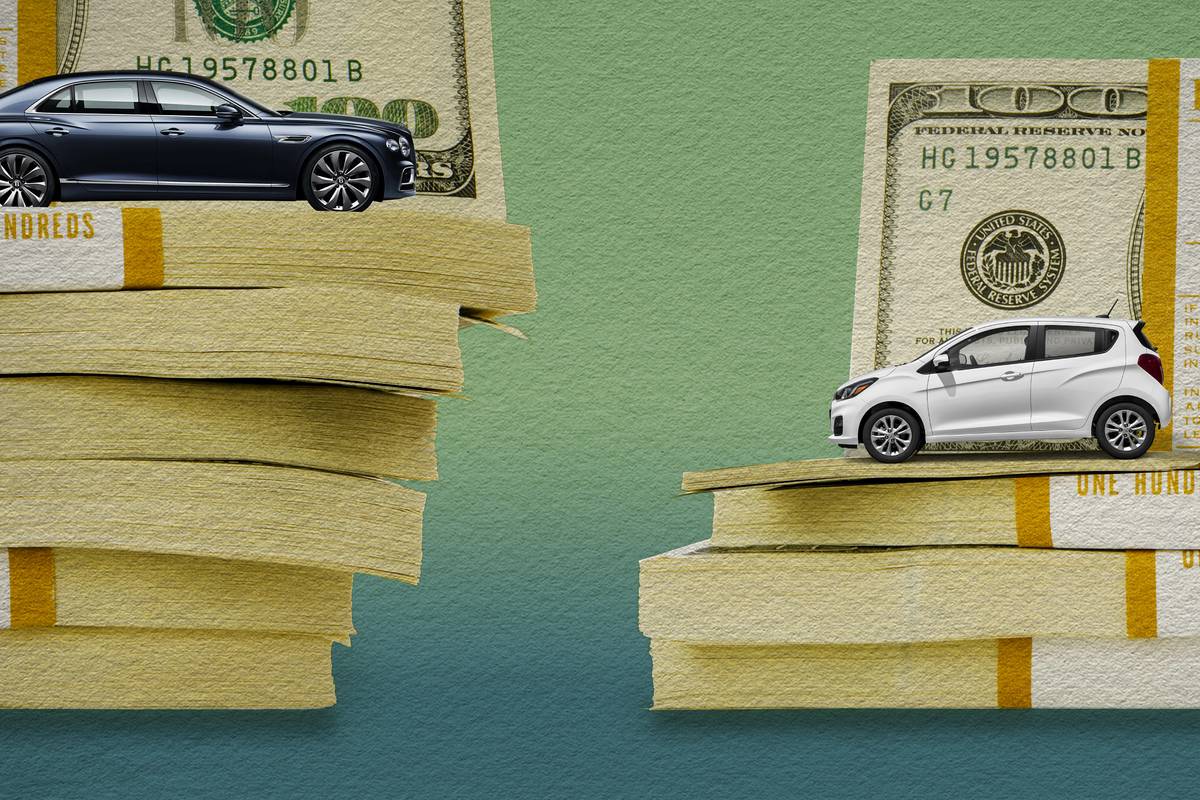
Here Are the 10 Cheapest New Cars You Can Buy Right Now
Featured stories.

By Cars.com Editors

2025 Toyota Camry Review: Thank Goodness for Sedans

Latest expert reviews

Sustainability Success
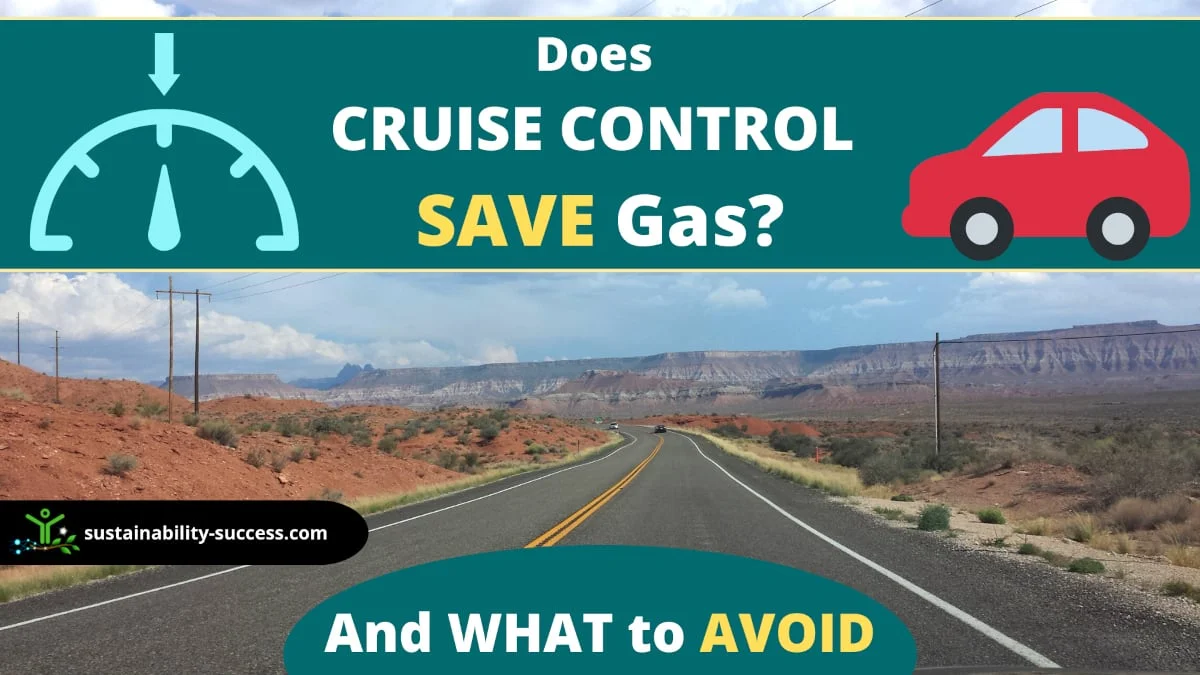
Does Cruise Control SAVE Gas? (and what to AVOID)
Following the increasing prices of gas, most people are adopting simple measures to save on fuel. For this reason, I’ve been asked more and more often: does cruise control save gas?
Yes, using cruise control can save gas, especially when commuting at a constant speed on a highway. However, this is not always true and in some situations, cruise control may actually increase gas consumption. This depends on a number of factors like traffic, type of journey, and more.
How true is the notion that cruise control helps to save gas? Does this simple practice really work or is it just another old wives’ tale? Or does cruise control use more gas? Read on to find out!
Does Cruise Control Save Gas? And Why?
Yes, cruise control can actually help you save gas. But how can cruise control help to save gas?
The reason why cruise control can help to save gas is that when accelerating or decelerating by placing the foot over the pedals the engine uses more gas. However, using cruise control when driving eliminates the need to constantly use the accelerator, either when speeding up or slowing down.
Instead, the cruise control feature helps you maintain a continuous speed. And by avoiding pressing on the pedals, a practice that costs you more fuel, you get to save more on gasoline.
This is not just a myth, in fact, also an agency of the Canadian government is reporting that: cars that fluctuate their speeds between 75 to 85 kilometers per hour use up 20% more gas every 18 seconds. On the contrary, cars that maintained a constant speed of 80 kilometers per hour (thanks to cruise control) saved on fuel and did not deplete gas as easily.
Similarly, the US government agrees that speeding, accelerating rapidly and braking immediately wastes a lot of gas. In fact, such aggressive driving at highway speeds can reduce your gas mileage by approximately 15%-30%.
These research findings clearly demonstrate that, by maintaining cars at a constant speed, cruise control helps to save gas.
As a matter of fact, cruise control can help you save by as much as 5% to 15% on gas!
After all, the cruise control of the vehicle uses the powertrain control module ( PCM ) to maintain constant designated speeds. Hence, when you activate cruise control, you eliminate the “human” aspect of maintaining speeds. This ensures that there are no speed fluctuations that could lead to the car consuming more fuel than what’s needed.
When Should You Use Cruise Control?
It is good news to know that cruise control can help you save on fuel. However, this does not mean that you use this car system everywhere and every time; use of cruise control is only limited to certain conditions.
For example, the feature is only fuel-efficient if used on flat roads or mostly level highways that do not have any traffic congestion. Besides the level roads, cruise control can also be used on steady uphills or downhill drives.
When you should AVOID using cruise control
You are not recommended to use cruise control when driving up and down hills that incline sharply or change perpetually, such as highways that pass across rolling hills.
Instead of using the cruise control feature on such paths, target an average speed and then allow the vehicle to reduce speeds by 5-10 mph when going uphill. Also, when descending, rise by similar speeds, that is, 5-10 mph. Following this technique helps to save on gas when driving through mountainous terrains, as compared to using cruise control.
Furthermore, it is not advisable to use cruise control when driving on slippery roads, such as those caused by snow and rain.
Usually, such road conditions change instantly when driving, requiring you to be careful and drive in response to the current situation at hand. And since cruise control cannot master these changes immediately after they occur, it is advisable to turn it off when driving in such conditions.
Also, you should not use cruise control if you feel drowsy or are driving in stop-and-go traffic areas, such as roundabouts or at traffic lights.
Remember that cruise control reduces the actions you need to take by eliminating the need to constantly step on the pedal. This is a situation that may make you even more sleepy and less alert, increasing the risk of an accident.
Similarly, stop-and-go traffic zones require a high level of concentration, as well as the need to monitor your speeds. In such areas, you might need to accelerate immediately or slow down instantly. Since cruise control only maintains constant speeds with no acceleration or deceleration, it is advisable that you turn off the feature when driving in these areas.
Advantages of Cruise Control
Here are the advantages of using cruise control on your car!
1. Saves fuel
The main benefit of cruise control is that it saves on gas by keeping the car moving at a constant speed.
However, this fuel-efficient system offers more advantages than just cutting down on your overall fuel bills. Consider four other advantages that cruise control provides:
2. Reduces Fatigue
Stepping on the pedals to accelerate or decelerate may sound like a simple activity; even so, this action wears you down and may even cause you to feel fatigued, especially when driving long distances.
However, cruise control eliminates the need to constantly step on the pedal, allowing you some time to rest, hence reducing fatigue.
3. Helps You Avoid Speeding Tickets
Most of us accelerate fast, even exceeding the speed limit without realizing it. And if the police would pull you over due to speeding, you might end up paying high penalty fees at the very least.
When you use cruise control, you can set constant speeds that do not exceed the legal speed limit. This protects you from the risk of being charged with overspeeding.
4. Improves Sustainability
Burning gasoline and diesel releases carbon dioxide into the atmosphere, contributing to global warming and climate change.
Since cruise control saves gas, it not only reduces the number of trips to the gas station but also helps you to reduce the environmental footprint of your commute, and improve your personal economic sustainability .
The less gas is used, the less pollution is released into the environment. In turn, reducing the carbon footprint promotes better environmental sustainability of your movements.
So, if you would like to help the environment, reduce waste, and have a more sustainable lifestyle but can’t afford an electric car (learn the hybrid vs electric car differences as well as hybrid vs gas cars ) or can’t use public transport, try at least to reduce your fuel consumption. This will help both the environment and your pocket, going a small step closer to sustainable development .
Most of us spend thousands of dollars every year on gasoline. Actually, according to Yardeni Research, households in the U.S spent approximately $5,000 per year on gas. And the worst part is that, with inflation, gas prices are going higher and higher with no relief in sight.
That’s why an increasing number of people in the US and all over the world are looking for ways to save on gas. For this reason, many people are asking: does cruise control save gas?
Absolutely! Cruise Control minimizes the number of times the vehicle accelerates or decelerates immediately, keeping it at constant speeds that significantly save on gas.
This simple practice is helping people to save hundreds of dollars a year and is especially common among drivers who make lengthy commutes on the highway.
Di you know that among the pros and cons of Drive Safe and Save insurance, there is also saving gas as well as having discounts on your insurance premium? Yes, also this insurance can help you to drive more cautiously and save even more gas!
So if you are looking to save on that fuel money , and even reduce your environmental impact on the planet, while at it, simply start using the cruise control feature of your car today!

Does Cruise Control Save Gas? (and Other FAQs)
With gas prices seemingly always on the rise, drivers are looking for ways to improve fuel efficiency. Many believe cruise control can help save gas by maintaining a steady speed.
But does this popular feature actually reduce fuel consumption? This article explores whether using cruise control can help you save money at the pump and when you should NOT be using cruise control.

Related: Does Running Your A/C Use More Gas?
Table of Contents
Does Using Cruise Control Save Gas?
Yes, in many cases, cruise control use can actually increase a vehicle’s fuel economy by as much as 5%-15%. While this might be surprising to some, there is good reasoning behind this decrease in fuel consumption.
Since fuel consumption is greatest during acceleration, it stands to reason that the best way of achieving peak fuel economy would be to maintain a set speed. This can be quite difficult to achieve by way of standard pedal application. However, maintaining a set speed is easily achieved through the use of cruise control.
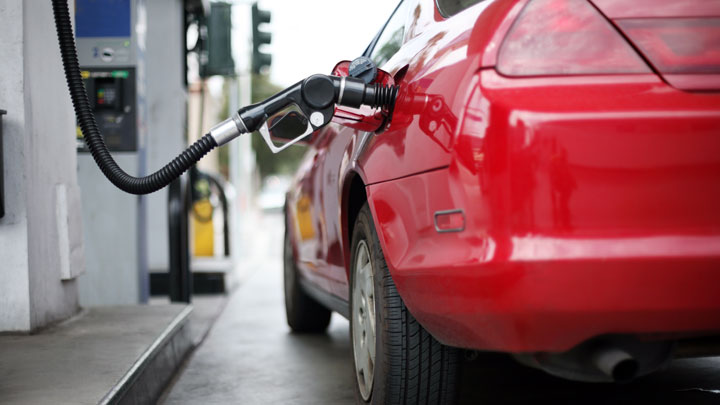
Since designated speeds are maintained by way of PCM control when a vehicle’s cruise control is activated, the “human” aspect of speed maintenance is eliminated. In many cases, even speed fluctuations incurred while traveling uphill or downhill are quite minor, when using cruise control.
Read Also: What is ECO Mode? (and When Should You Use It?)
When Should You NOT Use Cruise Control?
The use of cruise control is not advised when driving in slippery conditions, such as those presented by rain or snow. This is due to the fact that road conditions can change in an instant when driving in these less than ideal conditions, thereby making it essential to drive in response to the situation at hand.
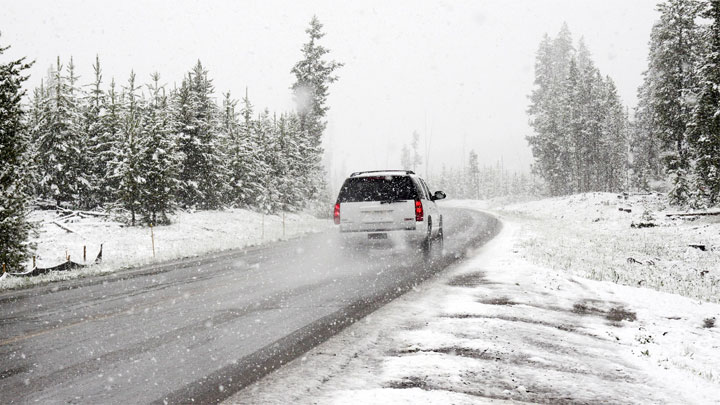
The use of cruise control is also not advised when one is drowsy or driving in congested conditions. Utilizing cruise control when tired only further eliminates one’s need to focus on the task of maintaining a set speed, often exacerbating this drowsiness.
Likewise, driving in stop-and-go traffic also requires a higher degree of concentration, as a significant amount of speed metering becomes necessary.
Does Cruise Control Use Brakes?
Cruise control, in its most basic form, does not use a vehicle’s brakes to meter speed. Quite the contrary, cruise control functions of this variety rely upon throttle plate actuation to maintain a constant speed, under an array of circumstances.
However, many late-model vehicles now feature adaptive cruise control, which does indeed utilize brake application as a means of slowing a vehicle’s speed. Systems of this type most often apply a vehicle’s brakes as a measure of accident avoidance, or to increase a vehicle’s trailing distance.
See Also: What Does the Overdrive Button Do?
Can Cruise Control Mess Up Your Transmission?

Contrary to popular belief, the use of cruise control does not accelerate transmission wear. In all actuality, regular cruise control use is actually capable of decreasing drivetrain wear, due to the significant reduction in manual throttle actuation.
A vehicle experiences the least amount of wear when operating at a constant, steady speed, for prolonged periods of time.
Many drivers are fooled into thinking that their vehicle’s transmission is being damaged when a vehicle’s cruise control causes an engine’s RPMs to spike during downshifting. In truth, this is not the case at all, as reasonably-timed downshifting is an accepted, and perfectly safe method of quickly decelerating any vehicle.
Where Should You Put Your Foot While Using Cruise Control?
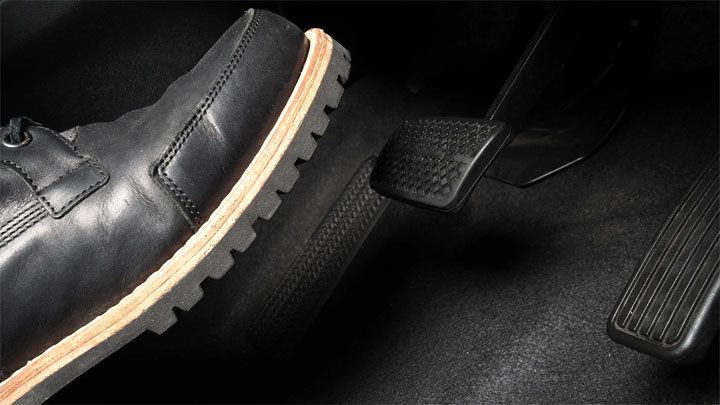
When using cruise control, it is always advised to keep your feet near a vehicle’s brake pedal at all times. Both road and traffic conditions can deteriorate in moments, necessitating additional input upon a driver’s behalf.
One is much more capable of mounting such a response in a timely manner, if their foot is near a vehicle’s brake pedal at all times.
This is even true when operating a vehicle that possesses adaptive cruise control. Though many drivers are lulled into a false sense of security when operating a vehicle under these conditions, one must be capable of maintaining full vehicle control at any given time.
That said, don’t drive with two feet (left foot over the brake, right foot over accelerator). Instead, keep your right foot near (not resting on top of) the brake pedal.
You may be tempted to cross your feet or legs (especially on a long drive) to stretch them out. But doing so severely impacts your reaction time when a situation calls for immediate braking.
Related: 5 Reasons Your Cruise Control Doesn’t Work
Are There Different Types of Cruise Control?
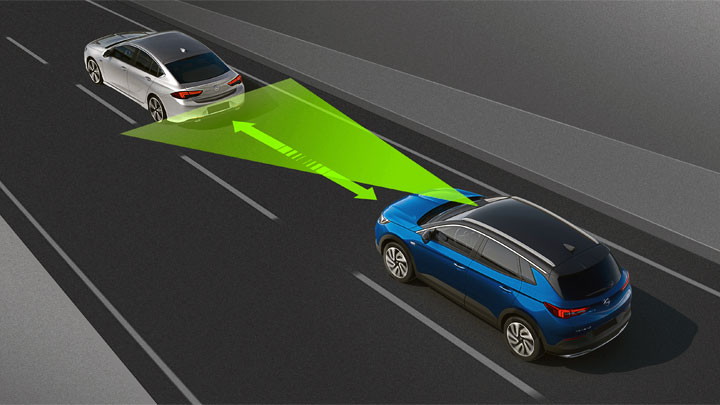
There are several different types of cruise control utilized by various vehicle manufacturers over the past several decades. The most basic of which is a standard, speed-limiting cruise control. As its name would suggest, a speed-limiting cruise control essentially governs a vehicle’s speed at a preset rate, thereby maintaining this speed under a variety of conditions.
Over the past decade, adaptive cruise control has also gained immense popularity. Systems of this type prove capable of maintaining a pre-set speed, while also metering a vehicle’s trailing distance, making any adjustments in speed as necessary. Systems of this nature rely upon a number of radar-based sensors, positioned along a vehicle’s exterior.
The latest form of cruise control to arrive on the scene has been that of a semi-autonomous design. Semi-autonomous cruise control systems meter a vehicle’s speed, braking, and steering, in response to traffic conditions. Systems of this type are capable of use in stop-and-go traffic, without driver intervention.
Related: 9 Benefits of Cruise Control
Can Cruise Control Be Added to a Vehicle?
In most cases, an aftermarket cruise control kit can be easily and affordably added to almost any vehicle. In fact, a number of aftermarket suppliers currently manufacture and market a variety of kits for this exact purpose.
Aftermarket cruise control kits typically include detailed installation instructions, and/or provide a direct phone number to the company’s technical support team. This eliminates much of the guesswork surrounding the installation of such systems.
It is also worth mentioning that aftermarket cruise control kits are available for vehicles with both cable and electronically actuated throttle linkages. While vehicles with the former of these two throttle configurations will require the installation of an additional throttle cable, the latter typically relies upon a module and basic wiring to facilitate operation.
- Recent Posts
- P0480 Code (Symptoms, Causes, and How to Fix) - Apr 19, 2024
- Car Temperature Gauge Stopped Working? (Here’s Why) - Apr 15, 2024
- Ignition Coil vs Coil Pack (What’s the Difference?) - Apr 8, 2024
Leave a Reply Cancel reply
Your email address will not be published. Required fields are marked *
Watch CBS News
When should you use cruise control, and does it improve gas mileage?
By Jeff Wagner
October 11, 2022 / 10:10 PM CDT / CBS Minnesota
Originally published on Oct. 11, 2022
MINNEAPOLIS - Some drivers love it while others don't trust it. The debate has played out in several cars, often between couples.
Christine asked us: When should you use cruise control? Good Question. Jeff Wagner hit the road to find answers.
Whether it's for the simplicity of not having to hit the gas pedal, or the necessity of making sure you're not speeding, a few finger taps on the steering wheel is all it takes to give your foot a break.
"I trust it under the right condition," said Bob Larkin, director of automotive service technology at Dunwoody College of Technology.
So what was cruise control designed for?
"The basis is really to help with driver foot fatigue on a long trip," he said.
That means using cruise control specifically for interstates and highways.
"Minimal traffic, minimal distractions, road's pretty level. That's probably the thing that it's really most designed for," Larkin said.
It's also an opportunity to improve gas mileage. Natural Resources Canada did a study in which a car was set to about 50 mph on cruise control. It consumed 20% less gas than a car cycling between 46-52 mph every 20 seconds.
When should you not use it? The answer to this question is much longer than when you should use cruise control. Larkin advises against using it on city streets.
"Taking the time to set that cruise control, then have to disengage that between city blocks can sometimes become a hindrance," he said, adding that there's also more distractions in a city such as bicyclists, pedestrians and stoplights.
Drivers should also avoid using cruise control on hilly terrain and when they're tired, two situations that require more active participation from the driver.
Lori emailed us because her husband said avoiding using cruise control while it's raining is outdated info, a debate she was determined to win.
Larkin said slick conditions, such as rain, snow, and ice are dangerous for a driver with cruise control engaged. The tires can start to spin, leading to a loss of control.
"If the driver's actually in control, you'll have a little more feel, a little more sense of what's happening and can actually react quicker," Larkin said.
Newer cars have adaptive cruise control. It can slow your car down if it senses the car in front of you slowing down, then speed up again when it's safe to do so.

Jeff Wagner joined the WCCO-TV team in November 2016 as a general assignment reporter, and now anchors WCCO's Saturday evening newscasts. Although he's new to Minnesota, he's called the Midwest home his entire life.
Featured Local Savings
More from cbs news.

Video shows good Samaritans rescuing driver from burning car in St. Paul

Anoka-Hennepin students, parents rally after board member threatens to vote down budget over diversity programs

WCCO looks back at covering the death of Prince

Twins right-hander Daniel Duarte scheduled for season-ending elbow surgery

Does Cruise Control Save Gas? Is It Better For Gas Mileage?
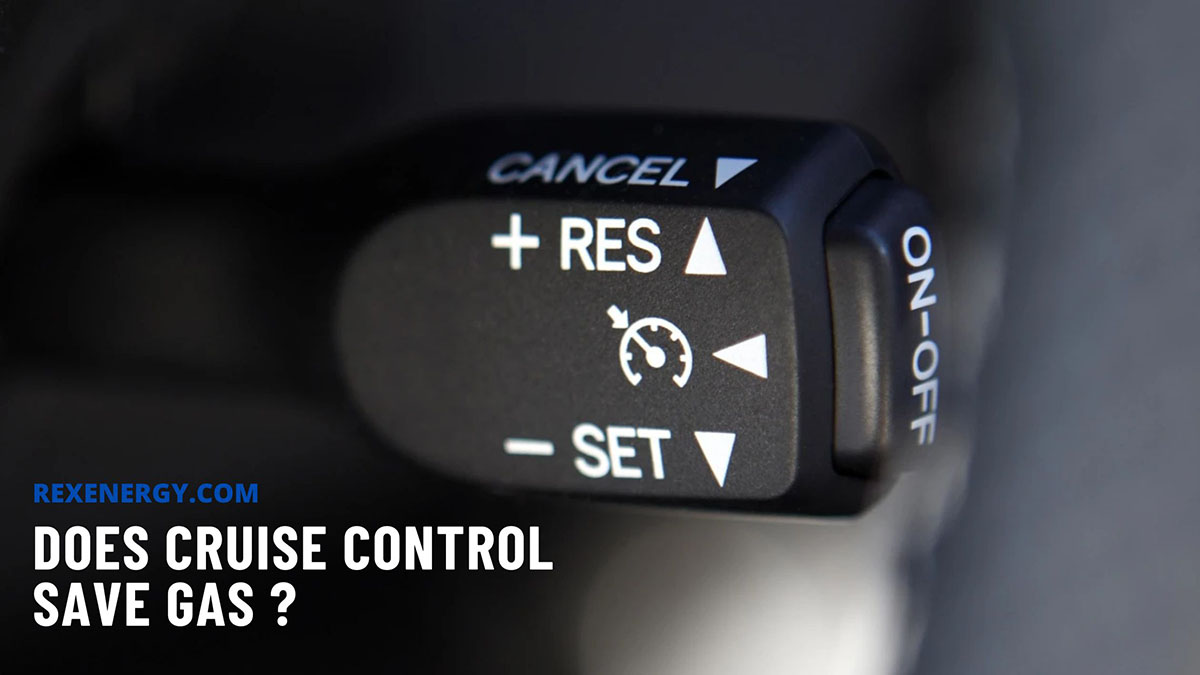
Is cruise control more fuel efficient? As drivers seek ways to optimize their fuel consumption, we delve into the science behind cruise control’s impact on gas mileage. Let’s explore the facts to determine if this widely-used feature is indeed a fuel-saving hero.
Does Cruise Control Use More Fuel?
Cruise control can save 14% on fuel on highways and 7% on ga s on city streets. When you engage on relatively flat and open roads, it maintains a constant speed. This stability can lead to improved fuel economy by reducing rapid fuel consumption associated with frequent speed changes.
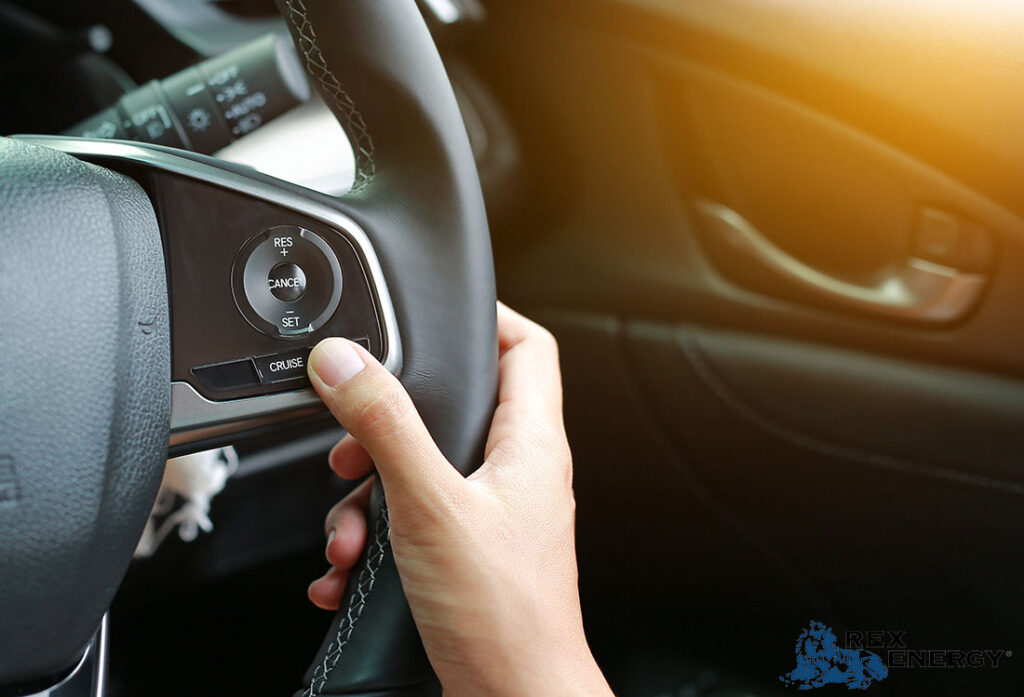
Additionally, the cruise control system is often designed to operate more efficiently than an average driver, making subtle adjustments to optimize fuel use. However, its effectiveness can diminish in hilly terrains or congested traffic, where the system may need to overcompensate, potentially negating the fuel-saving benefits.
Other Benefits Of Cruise Control Function
Here are some added advantages that cruise control brings.
Reduce Fatigue
While fatigue reduction is a widely acknowledged benefit, it’s crucial to emphasize its impact on overall safety. By maintaining a consistent speed, cruise control minimizes the physical strain on drivers during long journeys, allowing for a more relaxed and alert driving experience.
Enhance Sustainability
Cruise control contributes to sustainable driving habits by promoting fuel efficiency. By maintaining a steady speed, the system optimizes fuel consumption, reducing the overall carbon footprint of the vehicle. This will benefit the environment in the long run.
Help Avoid Getting Speeding Tickets
Cruise control acts as a built-in speed regulator, automatically maintaining the selected speed without exceeding the set limit. This feature can be a valuable ally in helping drivers avoid unintentional speeding, ultimately reducing the risk of getting speeding tickets and the associated fines.
When To Use Your Cruise Control
Effectively using cruise control can enhance your driving experience and fuel efficiency. Cruise control is most beneficial when you can maintain a consistent speed without the need for frequent braking or acceleration. Here are the times you should use this practical feature.
- Long, straight roads: Cruise control excels on extended, straight roads where consistent speed is feasible. This feature minimizes fatigue and contributes to fuel efficiency.
- Moderate traffic: On highways with mild traffic conditions and predictable flow, cruise control can help you maintain a consistent driving speed without the need for frequent acceleration and braking.
- Open highways: When the road is wide open with minimal interruptions, cruise control prevents unintentional speeding and offers a more relaxed driving experience.
When Not To Use Your Cruise Control
As beneficial as it is, this feature is not meant to be used all the time. You should not apply it in situations requiring more immediate control over speed and braking.
- Heavy traffic: In congested traffic situations, cruise control is not advisable. It’s essential to maintain awareness and have quick access to braking capabilities.
- Adverse weather: Rain, snow, and ice can make roads unpredictable. Disengage cruise control to ensure you have immediate control over your current vehicle in changing conditions.
- Hilly or winding roads: Cruise control struggles on hilly or winding terrains. These situations require constant speed adjustments and quick braking, making manual control crucial.
- City streets with many corners: In urban settings with frequent turns, stops, starts, and variable speeds, cruise control may not be practical. Manual control allows you to adapt to the dynamic traffic environment.
Tips To Save Fuel When Driving
Besides using cruise control, you can also apply the following tips to save fuel.
- Moderate speeds: Maintain average speeds, as fuel efficiency often drops significantly at highway speeds.
- Limit aggressive driving: Avoid aggressive driving habits like rapid acceleration and sharp braking, as they can dramatically impact fuel efficiency.
- Engine warm-up: Avoid prolonged idling for engine warm-up; modern engines are designed to warm up more efficiently while driving.
- Avoid excessive idling: Turn off the engine if you anticipate a long wait, as idling consumes fuel.
- Use overdrive gears: When applicable, use overdrive gears to reduce engine speed and improve fuel efficiency on the highway.
- Choose the right fuel: Use the recommended fuel for your vehicle; using premium gas in a car designed for regular unleaded fuel may not provide additional benefits.
- Aerodynamic considerations: Keep windows closed at higher speeds to reduce aerodynamic drag, and remove roof racks when not in use to improve fuel efficiency.
Frequently Asked Questions
Is cruise control bad for your car .
Cruise control is generally good for your engine when used appropriately. It maintains a steady speed, reducing strain and enhancing fuel efficiency. However, avoid using it in hilly terrains or heavy traffic, as constant speed adjustments may lead to increased engine stress and decreased overall efficiency.
Does Cruise Control Use More Battery?
No, the cruise control feature typically does not significantly impact the vehicle’s battery. It primarily relies on the engine’s power, and its electrical consumption is minimal. However, using other electrical features, like air conditioning, while cruise control is engaged may marginally contribute to battery usage.
The Bottom Line
While the effectiveness of cruise control varies, utilizing it judiciously in appropriate conditions can contribute to gas savings. Understanding the nuanced role of this feature empowers drivers in the quest for both efficiency and a smoother, controlled driving experience.

Petroleum Engineer At Rex Energy
I have worked in a variety of roles and professions, from quality engineering in the automotive industry to production engineer in the oil and gas sector. From a technical point of view, these roles have shown me how to design a process, ensure it is efficient and up to standard, and manage the execution of the said process from start to finish.
Leave a Comment
Related Articles
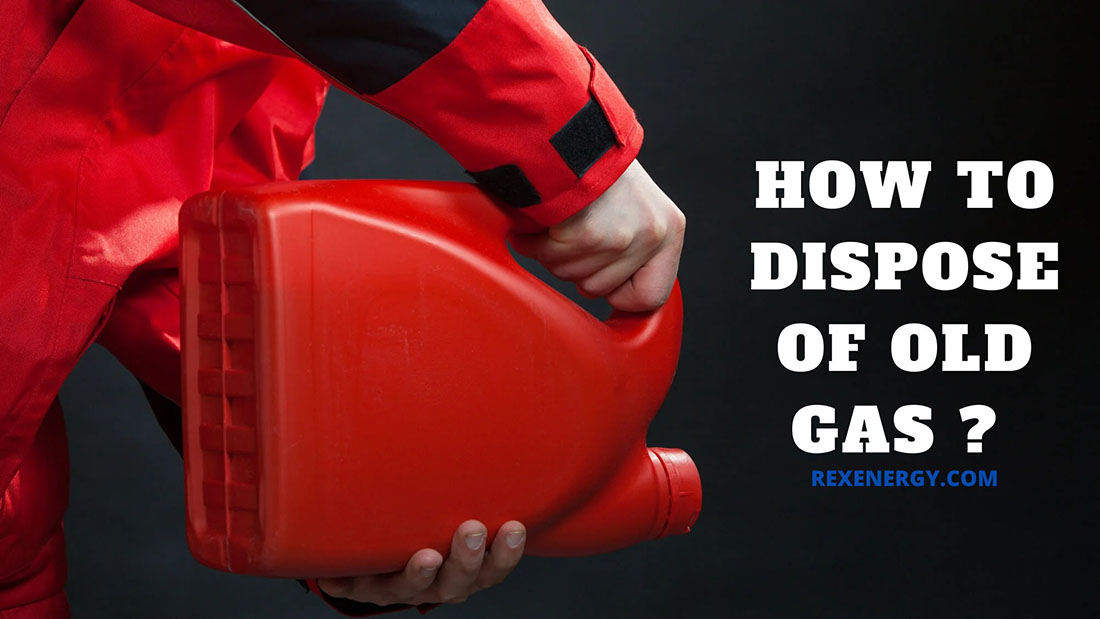
How to Dispose of Old Gas?
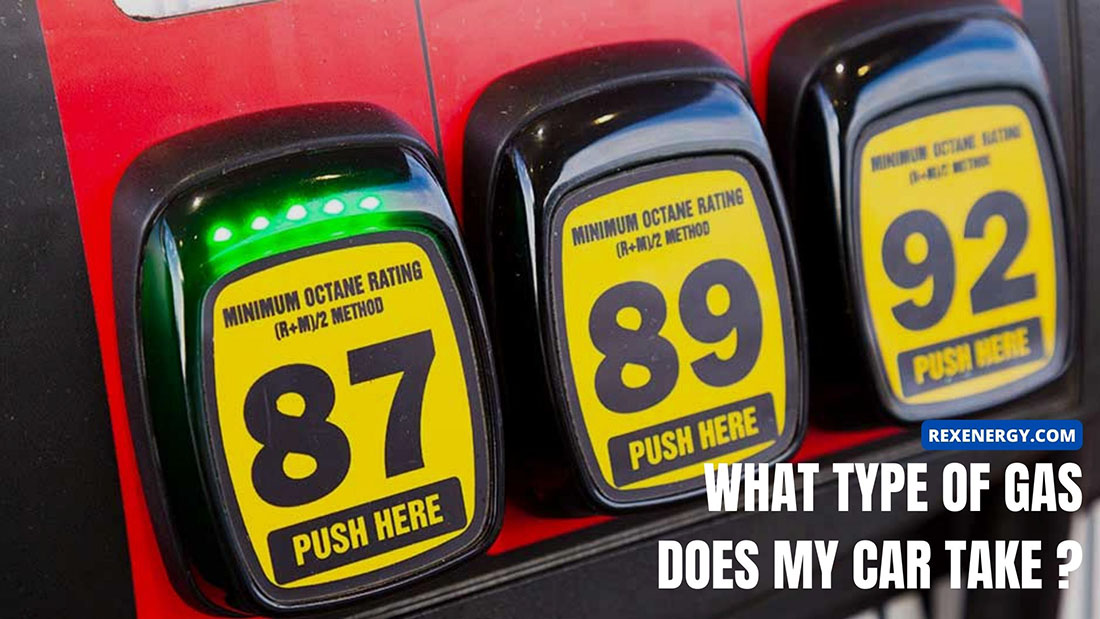
What Type of Gas Does My Car Take? (85, 87 or 89…)
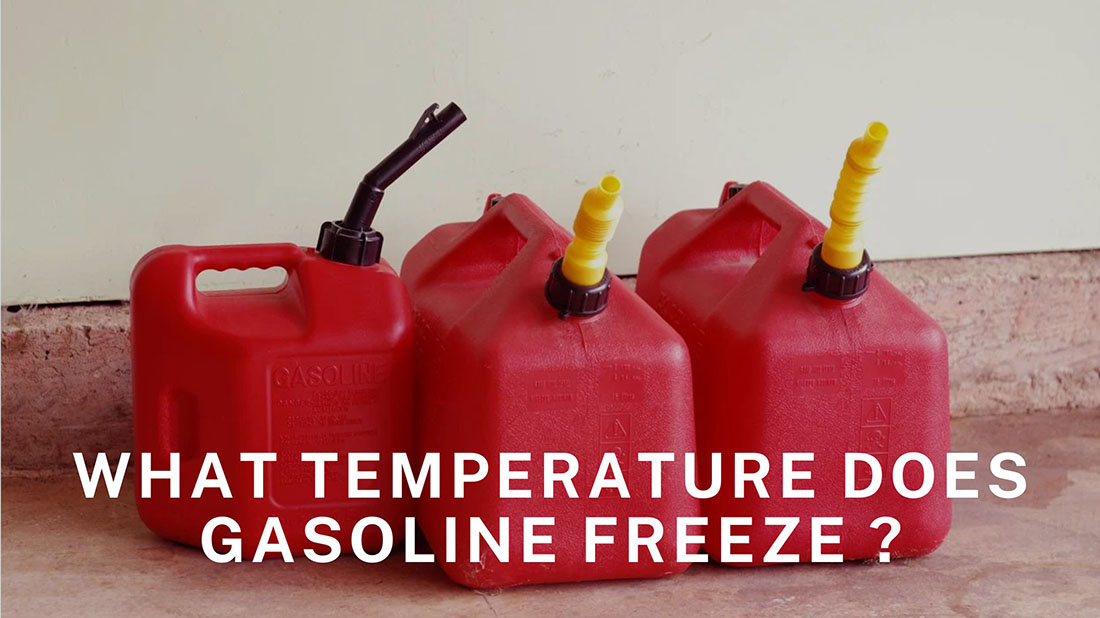
What Temperature Does Gasoline Freeze? Gas Freezing Point
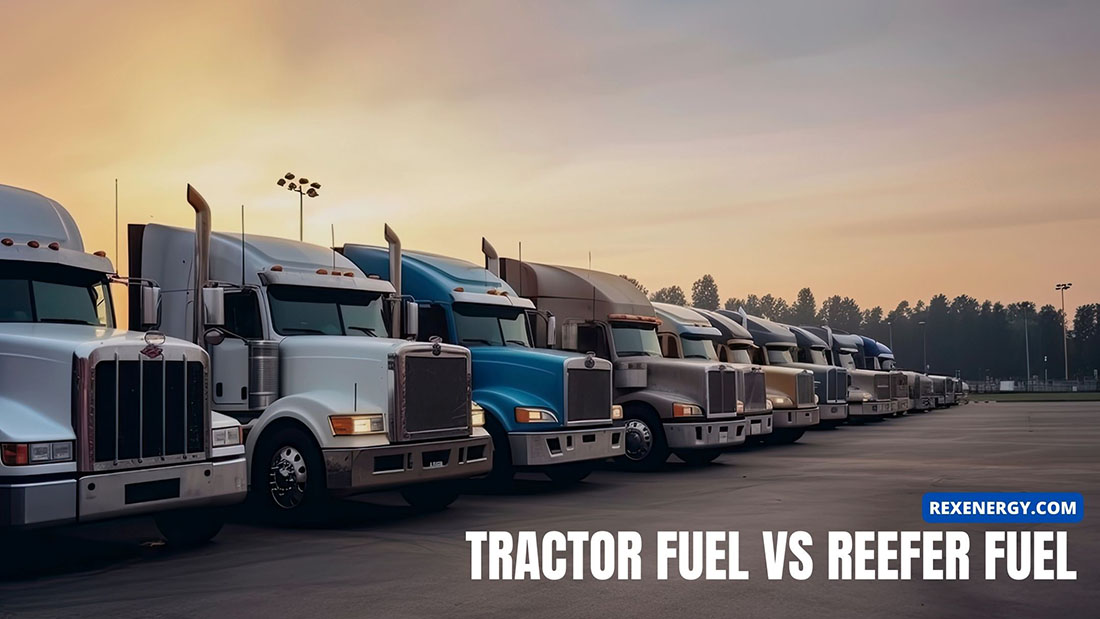
Tractor Fuel vs Reefer Fuel: Are They The Same?
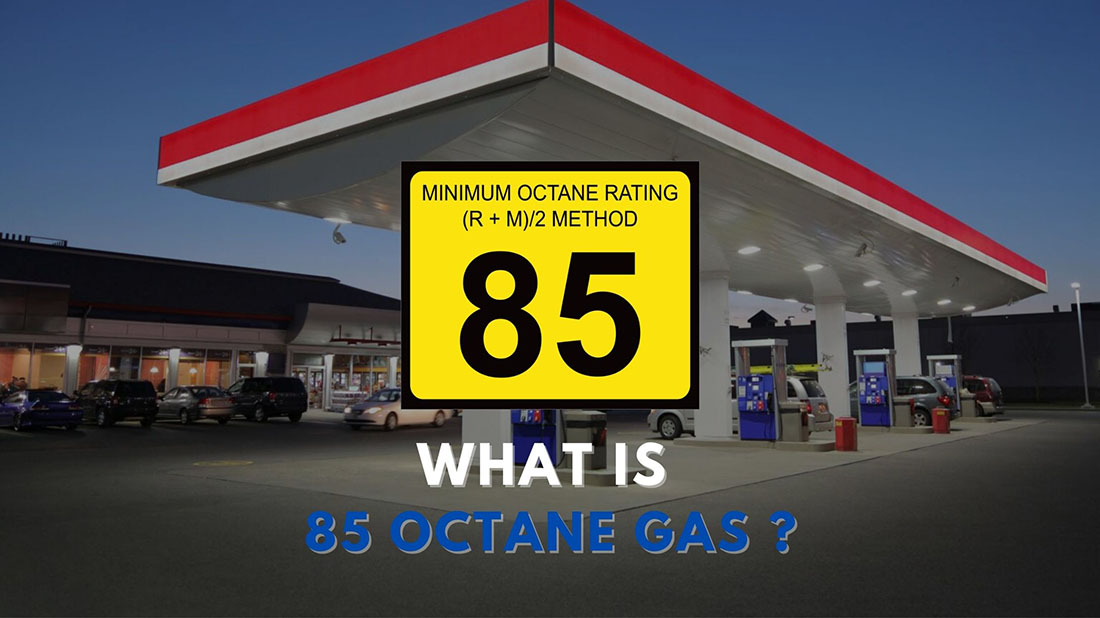
What Is 85 Octane Gas? Can You use 85 octane instead of 87
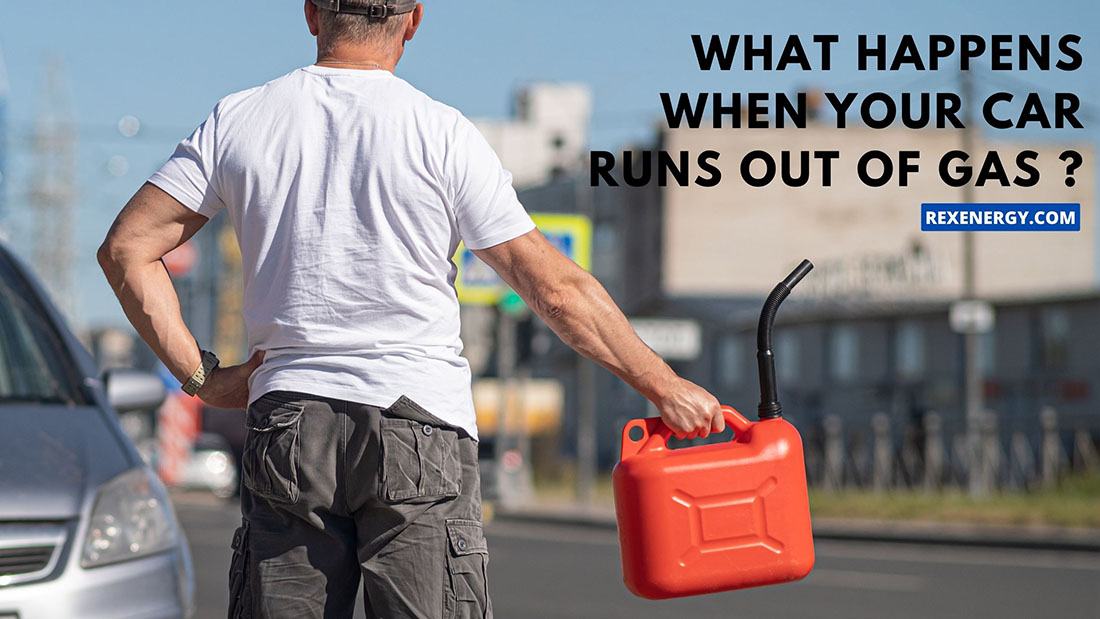
What Happens When Your Car Runs Out of Gas?
Ran When Parked - Car, Vehicle & Truck Guides and Repair Journals.
Does Cruise Control Save Gas? Unveiling the Truth About Fuel Efficiency
Cruise control is a familiar feature in many vehicles, designed to maintain a steady speed set by the driver. It minimizes the need for constant acceleration and deceleration, which can lead to changes in fuel consumption. Through our collective driving experiences, we’ve observed that using cruise control on the highway tends to result in a smoother ride with less pedal adjustment. It raises the question of whether this convenience also translates into fuel savings.

Studies have shown that maintaining a consistent speed with cruise control can indeed be beneficial for fuel efficiency. For instance, a Natural Resources Canada study highlighted that using cruise control at a constant speed can consume significantly less fuel compared to varying speeds. These savings are often more noticeable on long highway drives without frequent stops or changing traffic conditions. However, the impact of cruise control on fuel consumption can vary depending on terrain, driving habits, and vehicle type. Let’s explore how cruise control affects gas usage and under which circumstances it can offer the best benefits.
JUMP TO TOPIC
- 1.1 Understanding Cruise Control Mechanics
- 1.2 Benefits of Using Cruise Control
- 1.3 Setting and Adjusting Cruise Control
- 2.1 Adaptive Cruise Control and Safety
- 2.2 Fuel Savings and Efficiency Technologies
- 3.1 Cruise Control in Different Weathers
- 3.2 Terrain and Cruise Control
- 4 Economic and Environmental Impact
The Basics of Cruise Control
We’ll explore how cruise control works, its benefits, and how to use it for optimal fuel economy.
Understanding Cruise Control Mechanics
Cruise control is an electronic system that automatically controls the speed of a vehicle. Using a series of sensors, an onboard computer determines the vehicle’s speed and makes adjustments to the throttle position .
The actuator — a key component — connects to the throttle pedal linkage and manages engine power to maintain a steady speed. It’s an elegant symphony between the accelerator , throttle , and speed control , all to keep our ride smooth and consistent.
Benefits of Using Cruise Control
Using cruise control offers a tangible advantage in fuel efficiency, as it maintains a constant speed with minimal throttle position changes. This reduces the fuel consumption compared to variable speeds that normally occur with direct driver input. Our long drives become not only more comfortable but also more fuel-efficient .
Setting and Adjusting Cruise Control
When setting up cruise control, we first reach a desired speed and engage the system. Adjustments are straightforward:
- Setting Speed : Simply press the set button at the desired speed.
- Increasing Speed : Hold the accelerate button or briefly press it for small increments.
- Decreasing Speed : Press the decelerate or “set-” button.
- Disengaging : Tap the brake or clutch pedal, or turn off the system manually.
Knowing when and how to use cruise control is crucial for achieving optimal fuel economy. Therefore, it’s essential to familiarize ourselves with our vehicle’s specific cruise control functions for the best results.
Advanced Cruise Control Systems
In this section, we uncover the nuances of advanced cruise control systems, focusing on how adaptive cruise control enhances safety and optimizes fuel efficiency.
Adaptive Cruise Control and Safety
Adaptive Cruise Control (ACC) is a sophisticated feature that uses sensors and sometimes cameras to maintain a safe following distance from the vehicle ahead. It automatically adjusts the speed to prevent accidents without the need for driver intervention.
utilizes the same sensors to boost safety features, including lane-keeping and automated braking. These features are particularly helpful in maintaining vehicle control and reducing the likelihood of collisions.
Fuel Savings and Efficiency Technologies
Adaptive cruise control aids in maintaining a consistent speed , reducing the need for frequent acceleration and deceleration that can lead to unnecessary fuel consumption. Here’s how efficiency technologies contribute to fuel savings:
- Minimizing speed fluctuations leads to a more efficient driving pattern, which can save fuel, especially for electric vehicles (EVs) where maintaining battery life is crucial.
- Advanced systems can adjust the fuel injection rate to optimize fuel savings , benefiting both traditional combustion engines and hybrid systems.
Considerations for Road Conditions
When using cruise control, it’s crucial to consider the prevailing road conditions to ensure safety and fuel efficiency. Below we discuss the impact of different weathers and terrains on the effectiveness of cruise control.
Cruise Control in Different Weathers
We can’t ignore the effects of weather on cruise control performance, especially during rain or snow. When roads are slippery, maintaining a consistent speed with cruise control can be risky.
In snowy conditions, it’s often safer to disengage cruise control to maintain better control over the vehicle.
Terrain and Cruise Control
On hilly terrain, we must understand that our vehicle’s cruise control may cause more fuel to be consumed when attempting to maintain a constant speed uphill.
Economic and Environmental Impact
Utilizing cruise control has the advantage of maintaining a consistent speed , which can lead to better fuel efficiency . When we drive manually, especially on long road trips, our speed tends to fluctuate. These changes can result in accelerated fuel consumption, while setting a steady speed with cruise control helps us save gas and money .
However, it’s essential to consider traffic and weather conditions . While cruise control is effective on open highways, it might not be the best tool in heavy traffic or on winding roads where speed adjustments are frequent – manual control can be more economical in these situations .
The environmental impact of improved fuel efficiency extends to reduced greenhouse gas emissions. Electric vehicles (EVs) also benefit from this technology. While they don’t use gas, maintaining an even pace optimizes their energy use, thus extending the range.
In conclusion , cruise control can indeed contribute to fuel savings under appropriate conditions, leading to both economic benefits and a lesser environmental footprint . Remember, for maximum efficiency, use it wisely by considering the situation and switching off when it doesn’t align with optimal driving conditions.
- Recent Posts
- What Is the Steering Angle Sensor Reset Cost? What to Expect - March 28, 2024
- What Is the RV Oven Size? Exploring the Different Sizes - March 28, 2024
- How Much Does a Lexus RX350 Weigh? What You Need to Know - March 28, 2024
Related posts:
- Best Rated Auto Insurance Companies: Your Guide to Top Carriers
- What Car Has the Best Warranty: Unveiling Top Comprehensive Coverage Options
- How to Trade Cars with Someone: A Step-by-Step Guide
- How Much Does a RAV4 Weigh: Unpacking the Curb Weight Specs
- Does Ford Still Make the Flex: Unveiling the Facts on Production Status
- What Car Does Mr. Beast Drive: An Insight into the YouTuber’s Garage
- How to Launch an Automatic Car: Expert Tips for Smooth Acceleration
- Work from Home Automotive Jobs: Navigating Remote Opportunities in the Auto Industry
- Hybrids & EVs
- Motorsports
- Tips, Tricks & Trends
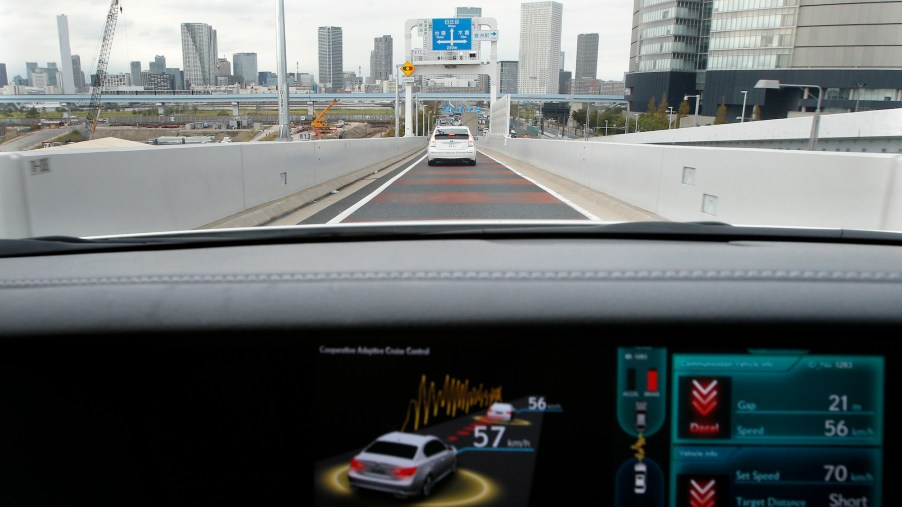
Does Cruise Control Waste More Gas?
Many car shoppers seek models with advanced driver assists . Features such as automatic emergency braking and lane-keeping assistance can safeguard occupants and keep the car’s resale value high. But there are tradeoffs with some advanced safety features. Some have a reputation for glitching; others are expensive to repair. And one notable feature — adaptive cruise control — might even negatively affect gas mileage and total ownership costs.
How does adaptive cruise control work?
Using inputs from thousands of data points, New #EPACE 's Driver Condition Monitor detects if you're beginning to feel drowsy, alerting you to take a break. Adaptive Cruise Control also maintains a set distance to the car in front for more relaxed, less tiring long distance trips. pic.twitter.com/unbYfEoej1 — Jaguar (@Jaguar) November 21, 2020
A modern variation on the traditional cruise control system, adaptive cruise control includes different systems that automatically adjust a vehicle’s position relative to its road position. One system known as automatic braking uses sensors to detect vehicles ahead and slow to avoid rear-ending them. When there is no longer an obstacle in front, adaptive cruise control will resume its previous speed automatically.
Dynamic set speed types can slow a car or speed it up without manual intervention to match current speed limits. These systems use GPS to gauge a vehicle’s position relative to speed limit signs and help drivers avoid unintentionally speeding on a highway or expressway.
As car manufacturers have worked to develop autonomous vehicles in recent years, the industry has developed a classification convention that includes features that allow a vehicle’s computer systems to share vehicle control with the driver or else take control entirely. Vehicles with adaptive cruise control are considered Level 1 autonomous vehicles. Level 1 vehicles usually also have features like parking assistance, lane-keep assistance, and automatic braking.
Are there drawbacks to adaptive cruise control systems?
Adaptive cruise control users are more likely to speed, IIHS study claims: https://t.co/WqwDjK9E5z pic.twitter.com/0CNGNbpRL8 — Autoblog (@therealautoblog) March 14, 2021
Adaptive cruise control doesn’t come standard on every vehicle. In fact, this system can be pricey depending upon the make and model. Though this feature can help mitigate accidents stemming from driver fatigue, it can also lull drivers into a false sense of security. A tired driver using adaptive cruise control might not resume control of the vehicle quickly enough in an accident or emergency.
According to a recent study cited by Kia , if a driver travels through hilly or mountainous terrain with many curves, adaptive cruise control systems might prove less fuel-efficient than presumed. The excessive increases and decreases in speed could cause vehicles to consume up to 20 percent more fuel than they might by using the gas and brake pedals.
However, in general, adaptive cruise control usually helps drivers conserve fuel, save money , and reduce total car ownership costs. Coupling this feature with driving in the right-hand lane and avoiding sudden acceleration and braking can result in serious fuel cost savings.
The origins of this car convenience feature
It’s helpful to understand what cruise control is and how it works . It’s a system that keeps a vehicle running at a constant speed the driver sets. Though it has precursors, the modern mechanism we know as cruise control was invented in 1948 and patented in 1950 by inventor Ralph Teeter. The device saw its first commercial use when installed on the 1958 Chrysler Imperial. Soon, the feature saw widespread adoption by auto manufacturers and surging popularity among consumers, especially during the oil crisis of the 1970s when consumers were eager to reduce the amount of gas they consumed.
In cars equipped with this feature, a driver brings the vehicle up to the speed they want and then enables cruise control with a switch or a button. The vehicle then pulls the throttle to maintain the speed. The driver can still accelerate, but once they take their foot off the gas pedal, the car decelerates to the previously set speed until cruise control is disabled. Traditional systems typically store the previously set speed in memory to restore that speed after braking.
Traditional cruise control systems also work best with vehicles with a continuously variable or automatic transmission. When using them with manual transmissions, shifting gears typically disengages the feature. It can also be hazardous to use during inclement weather and when making sharp turns. However, drivers can benefit from the increased fuel efficiency they provide, MotorTrend reports. Moreover, setting the speed at or below highway speed limits during long drives can help drivers avoid unintentionally speeding.
Is Adaptive Cruise Control Worth It? Absolutely
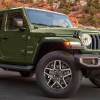
Cyberattack Spurns Another Stellantis Lawsuit Against Suppliers; This Is Getting Old
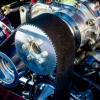
What Modifications Add Value To a Car?

The First U.S. Speed Limit Law Dates Back to 1652 and Inflicted a Steep Fine on Violators
Produced by Digital Editors
Our experienced team of Digital Editors works to produce all of our content from contributing authors, including everything from assigning headlines and crafting the angles that readers will be interested in, to editing and publishing the articles once they’re drafted. Our DEs are editors and writers in their own right, who each have several years of experience in digital media and publishing.
Each one caters their work to their specific interests.

Driving More Efficiently
Personalize fuel prices.
Select the fuel type and enter your fuel price to personalize savings estimates.
Select Fuel Type Select Fuel --> Regular Midgrade Premium Diesel E85 CNG LPG Fuel Price $ /gal
Click "Save My Prices" to apply your prices to other pages, or click "Use Default Prices" to use national average prices.

Aggressive driving (speeding, rapid acceleration and braking) wastes gas. It can lower your gas mileage by roughly 15% to 30% at highway speeds and 10% to 40% in stop-and-go traffic. 1,2
Driver feedback devices can help you drive more efficiently. A recent study suggests that they can help the average driver improve fuel economy by about 3% and that those using them to save fuel can improve gas mileage by about 10%. 3
Sensible driving is also safer for you and others, so you may save more than gas money.

While each vehicle reaches its optimal fuel economy at a different speed (or range of speeds), gas mileage usually decreases rapidly at speeds above 50 mph.
You can assume that each 5 mph you drive over 50 mph is like paying an additional $0.25 per gallon for gas. 4
Observing the speed limit is also safer.
Step 1. Select a vehicle. (Hydrogen fuel cell and plug-in hybrid electric vehicles are not currently supported.)
EPA-estimated highway fuel economy: mpg (Average Vehicle)
Step 2. Enter your fuel cost and speed information.
I pay $ Fuel price in dollars/gallon /gal for .
I usually drive 80 75 70 65 60 55 mph on the highway.
Understanding the Charts
Cost/Gallon: When driving 50 mph, price per gallon is assumed to be the same as the pump price. At higher speeds, the estimated price per gallon is increased based on the additional fuel you use by driving faster. The price of fuel doesn't actually go up, but this is a useful way to put the cost of driving faster in context.
Cost/Gallon = Fuel Price at Pump × Est. MPG at Higher Speed ÷ Est. MPG at 50 MPH
Cost/100 Miles: This is useful for estimating fuel costs for long trips.
Cost per 100 Miles = Fuel Price ÷ Estimated MPG × 100
Save Money: This graph shows how much money you can save by slowing down. Cost per gallon and cost per 100 miles show the difference in cost at your typical highway speed and the cost at the reduced speed.
Savings per extra time incurred is calculated as the money saved by slowing down divided by the extra time incurred:
Savings = (Fuel Price * (1 ÷ MPG T )-(1 ÷ MPG R )) ÷ ((1 ÷ Speed T )-(1 ÷ Speed R ))
- MPG T = fuel economy at typical highway speed
- MPG R = fuel economy at reduced highway speed
- Speed T = typical highway speed
- Speed R = reduced highway speed
Speed-mpg relationships are based on dynamometer tests of 74 light-duty vehicles representing a variety of manufacturers, nine vehicle classes, engine sizes 1.5 L to 6.2 L, and model years 2003 to 2012. Almost all are conventional gasoline-powered vehicles. Only one diesel and two hybrids are included; no plug-in hybrids or electric vehicles were tested.
These estimates work best for well-maintained modern gasoline light-duty vehicles and will likely be less accurate for diesels, hybrids, and vehicles with cylinder deactivation. Their applicability to plug-in hybrids and electric vehicles is unknown.
We estimate vehicle MPG at steady-state cruising speeds based on the vehicle's EPA "highway" fuel economy rating. These estimates are typically higher than both the EPA highway MPG ratings and the MPG consumers experience in on-road highway driving. Therefore, our cost and savings estimates should be conservative.

Hauling cargo on your roof increases aerodynamic drag (wind resistance) and lowers fuel economy.
A large, blunt roof-top cargo box, for example, can reduce fuel economy by around 2% to 8% in city driving, 6% to 17% on the highway, and 10% to 25% at Interstate speeds (65 mph to 75 mph). 5
Rear-mount cargo boxes or trays reduce fuel economy by much less—only 1% or 2% in city driving and 1% to 5% on the highway.
If you need to use an external cargo container, removing it when it's not in use will save fuel and money.

Avoid keeping unnecessary items in your vehicle, especially heavy ones. An extra 100 pounds in your vehicle could reduce your MPG by about 1%. 6 The reduction is based on the percentage of extra weight relative to the vehicle's weight and affects smaller vehicles more than larger ones.

Idling can use a quarter to a half gallon of fuel per hour, depending on engine size and air conditioner (AC) use. Turn off your engine when your vehicle is parked. It only takes about 10 seconds worth of fuel to restart your vehicle. 7 Learn more...
Turning your engine off when your vehicle is parked can save you money. Here are some tips to help you maximize your savings. 7

Best Practices
- Limit engine starts to about 10 times per day on average—unless your vehicle is equipped with a start-stop system . Occasionally exceeding this limit should not cause excessive starter wear.
- Assuming 10 starts a day aren't exceeded, any shutdown longer than 1 minute will save money.
- Limit electric accessory use during shutdown, particularly during longer shutdown periods.
- Drive at least 5 miles between start cycles to fully recharge the battery.
If you'd like to promote idle reduction in your area, the Clean Cities and Communities IdleBox Toolkit can help you get started.

Using cruise control on the highway helps you maintain a constant speed and, in most cases, will save gas.
- Thomas, J., S. Huff, B. West and P. Chambon. 2017. Fuel Consumption Sensitivity of Conventional and Hybrid Electric Light-Duty Gasoline Vehicles to Driving Style , SAE Int. J. Fuels Lubr. 10(3):2017, doi:10.4271/2017-01-9379.
- Oak Ridge National Laboratory. 2017. Sensible driving saves more gas than drivers think .
- Estimates for the effect of speed on MPG are based on a study by Oak Ridge National Laboratory (ORNL): Predicting Light-Duty Vehicle Fuel Economy as a Function of Highway Speed , SAE 2013-01-1113.
- Oak Ridge National Laboratory. 2014. Fuel Economy and Emissions Effects of Low Tire Pressure, Open Windows, Roof Top and Hitch-Mounted Cargo, and Trailer (SAE 2014-01-1614). Study results are based on testing with a small sedan, a standard size SUV, a single roof-top cargo box (20" H x 40" W x 50" L), and a single rear-mount cargo tray. Cargo boxes with other dimensions or shapes may have a different effect on fuel economy.
- Based on a fuel economy improvement of 0.33% per 1% reduction in weight as estimated by Ricardo Inc., Impact of Vehicle Weight Reduction on Fuel Economy for Various Vehicle Architectures , April 2008. Our estimate assumes a vehicle weight, including cargo, of 3,200 lbs.
- Argonne National Laboratory. 2015. Stop and Restart Effects on Modern Vehicle Starting System Components – Longevity and Economic Factors.
This website is administered by Oak Ridge National Laboratory for the U.S. Department of Energy and the U.S. Environmental Protection Agency.
This website is administered by Oak Ridge National Laboratory for the U.S. DOE and the U.S. EPA.
McGrath Auto Blog
News from Around Our Family of Dealerships
Does Cruise Control Help You Save Gas
May 14, 2020 By Becca Gardner
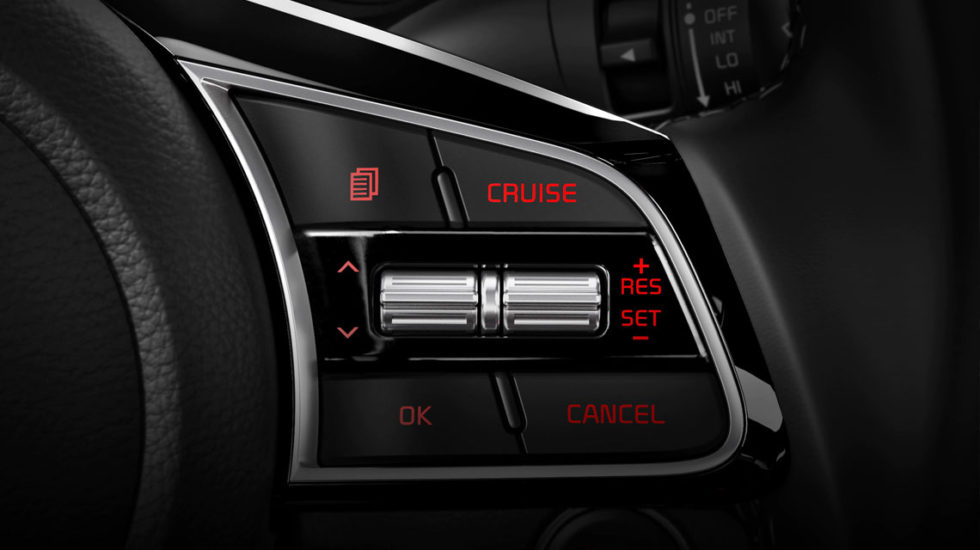
The question does cruise control save gas has been a long debate among drivers. We will cover the facts on how cruise control can impact your fuel mileage, the benefits of cruise control and ways you can save gas while driving
Does Cruise Control Save Gas?
The answer is yes, cruise control can help you save gas. Not only does it help with fuel economy, cruise control is even good for your car. Constant acceleration and braking causes wear and tear on your vehicle and when you utilize cruise control, acceleration and braking is minimized. Cruise control is at it’s most beneficial when used on level ground as well as steady uphill or downhill climbs.
Edmunds ran a test to see if cruise control saves gas consumption. They concluded that it does save gas and they found that it can save up to 14% with and average of 7%. According to Edmunds, cruise control saves gas by smoothing out the drive since the diver is not accelerating or braking and prevents nervous surging of RPMs.
It’s important to note that with new vehicles there is a recommended break-in period where you shouldn’t use cruise control. We have broken the break-in mileage down by manufacturer:
- GM: 500 miles
- Hyundai: 600 miles
- Volkswagen: 1000 miles
- Ford: 1000 miles
- Kia: 600 miles
- Genesis: 600 miles
- Ram: 300 miles
Benefits of Using Cruise Control:
Reduce driving fatigue.
When you use cruise control your foot can be taken off the gas or break. This allows for a more comfortable seating position and reduces the chance of fatigue in your foot.
Reduce the Risk of a Speeding Ticket
Cruise control maintains a consistent speed that you have set and reduces the chance of getting a speeding ticket
Increase Focus
With cruise control activated, you will have one less driving task to monitor, your speed. This allows you to focus more on your surroundings and driving.
More Comfortable
Cruise control is more comfortable to use because you do not need to accelerate or brake which allows you to comfortably sit with your foot not extended.
Adaptive Speed
A feature found in most new vehicles is the adaptive cruise control feature. This allows you to set a speed and if the vehicle detects a car in front slowing down the cruise control will adjust to maintain a safe distance.
Automatic Braking
While using cruise control, many newer vehicles are equipped with automatic braking which senses if a vehicle in front of you is slowing down and if you haven’t adjusted your speed the cruise control will adjust for you.
Other Methods to Save Gas Consumption Include:
- Driving conservatively instead of aggressively
- Driving the speed limit
- Avoiding long periods that the vehicle is idling in
For more information about cruise control, contact our friendly team at McGrath Auto. If you’re looking to upgrade your vehicle, especially to one with added cruise control features like adaptive speed and automatic braking, shop our full inventory online at McGrathAuto.com.
Our Mission
Do the Right Thing. Exceed Expectations. Make a Difference.
- Shop Specials
- Auto Repair
- McGrath Jobs
Car advice put simply.
Does cruise control save gas? – get more gas mileage
Find out how cruise control can unexpectedly save on fuel consumption..
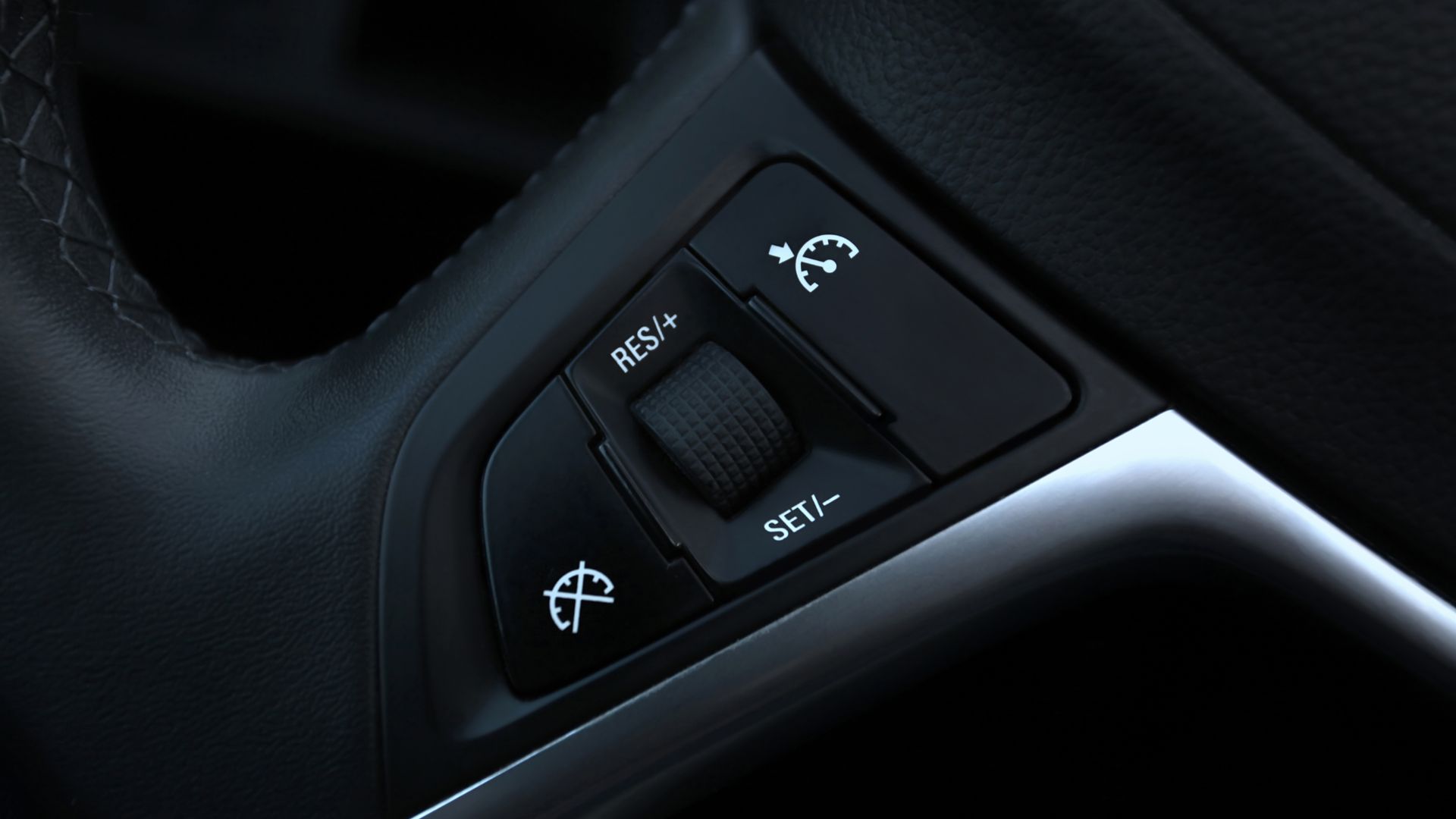
In times where cruise control comes as a standard piece of equipment on new cars, one important question is raised – does cruise control save gas ? Yes, cruise control saves gas and could even result in up to 20% better fuel economy if properly used.
Still, there’s much more about cruise control and gas mileage than meets the eye, and our team set out to explore. We’ll give you all the details on how you can save fuel with this driving function, and provide insight into how it works. Keep reading to figure out whether it could work for your driving style.
What is cruise control and how does it work?
Cruise control was a big deal in the automotive industry back in the day, as it made the first step towards autonomous driving. Well, at least it does so with the latest forms of adaptive cruise control, but you can enjoy the benefits of standard cruise control in your everyday driving.
It’s not exactly handy for busy town roads but comes in quite beneficial during highway driving. Cruise control lets you maintain your ride at a certain speed level without having to deal with the gas pedal. So, there’s no commotion caused by constantly shifting gears and keeping your foot on the pedal. You can just lean back and enjoy a smooth ride.
It’s best to use cruise control on a straight road where you won’t have to slow down or make turns often. Once you build up your speed, turn the function on by pressing the cruise control setup button that’s mostly placed around the steering wheel.
It will keep your car going at the same rev per minute ( RPM ) range without you having to keep your foot on the gas pedal. So, it’s a convenient feature for keeping optimal speed, and for improving fuel economy on top of it.
Impact of the cruise feature on your gas mileage
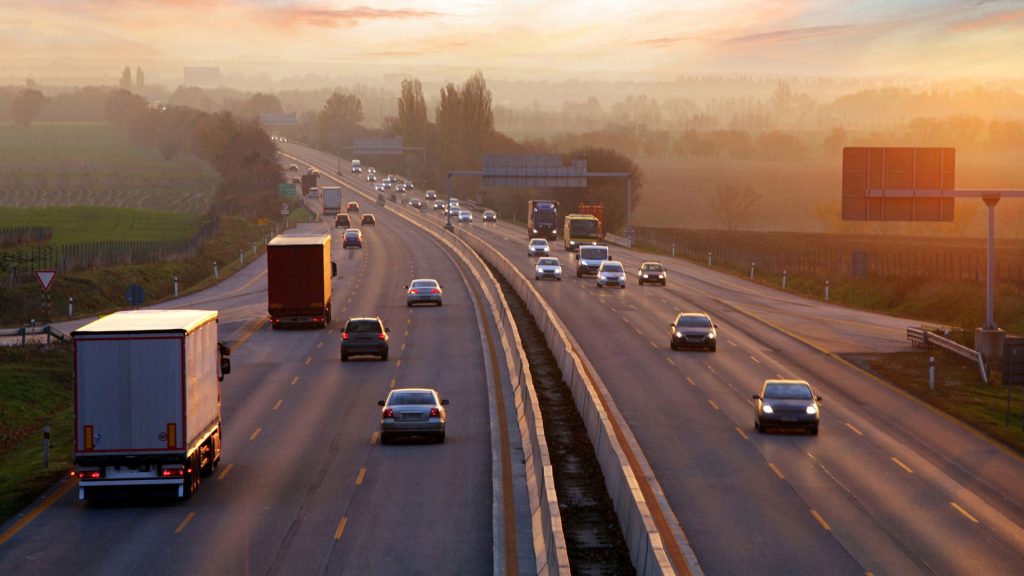
Now that you know how handy a cruise control option can be, it’s time for us to dig deeper into its connection with fuel economy. It has to do with the power output from the engine and the RPM level that you tend to drive at.
For instance, revving your car and keeping the engine spinning at high RPMs will only burn more fuel. On the other hand, if you drive at a lower RPM level, the engine will burn less fuel, especially in a longer drive. That’s why the cruise control setup can kick in quite well in helping you waste less fuel while driving on the highway.
You can just set up the optimal speed and drive in a higher gear on a lower RPM level. Keeping the revs in a flat line is also crucial for your fuel economy, and cruise control lets you drive at a steady RPM rate. You’ll save much more fuel this way since any fluctuations in gear changes and revs consume more fuel.
In general, you can save from 7% to 20% more fuel by driving with cruise control activated. There’s no sudden pressure on the throttle caused by accelerations which could trigger more fuel injection. Your engine will keep operating in the set RPM range, and the torque range remains the same which results in less fuel spent.
When is it a bad idea to use cruise control?
It’s a bad idea to use the cruise control system while moving uphill or on busy roads. Especially if you are facing an elevating road that requires a higher power output, using cruise control is not advisable. Think of it this way – you might end up damaging the engine if the RPM level is too low due to the set cruise feature.
The car might struggle to maintain its speed and you’ll just do more harm than good trying to save up on fuel. Also, driving on busy city roads isn’t much better of an idea, since you need to control the throttle response in turns. On top of that, there are some cases where drivers report cruise control not working properly, so it’s also important for the system to be fully operational.
Overall, it’s only both safe and beneficial in terms of fuel economy to use the cruise control system on roads where you can maintain the same speed level.
Is cruise control bad for your car?
No, cruise control isn’t bad for your car and it can hardly do any damage to the drivetrain components. Moreover, it can even be beneficial to use this feature, since keeping the engine rolling at a steady speed can’t do any harm.
As you shift through the gears, the difference in power output and torque requires more fuel for combustion needed to accelerate. So, you can even reduce wear and tear on your engine components by making use of this convenient driving feature.
Do brakes cancel cruise control?
Yes, you can cancel the cruise control feature by stepping onto the brake pedal. From this point on, you can accelerate and slow down the same way you normally would without the system being active. The reason behind this is the signal that the brake pedal sends to the computer.
It acts the same as pressing the cancel button, but it comes in handier during driving since you won’t have to take your eyes off the road.
Can you speed up while using cruise control?
Yes, you can speed up while using cruise control on most modern cars. Recent models have a modern cruise control system with buttons on the steering wheel that let you increase the speed or slow down. This feature alone helps you save fuel while using the cruise control function.
It’s because most cars let you accelerate just by 1 mph each time that you press the button. This way, you won’t have to burn much fuel while accelerating, and then slowing down right after. It lets you set up your driving speed precisely, and the same goes for slowing down. Have in mind that stepping on the brake pedal will shut down the cruise control feature.
Don’t use it during bad weather
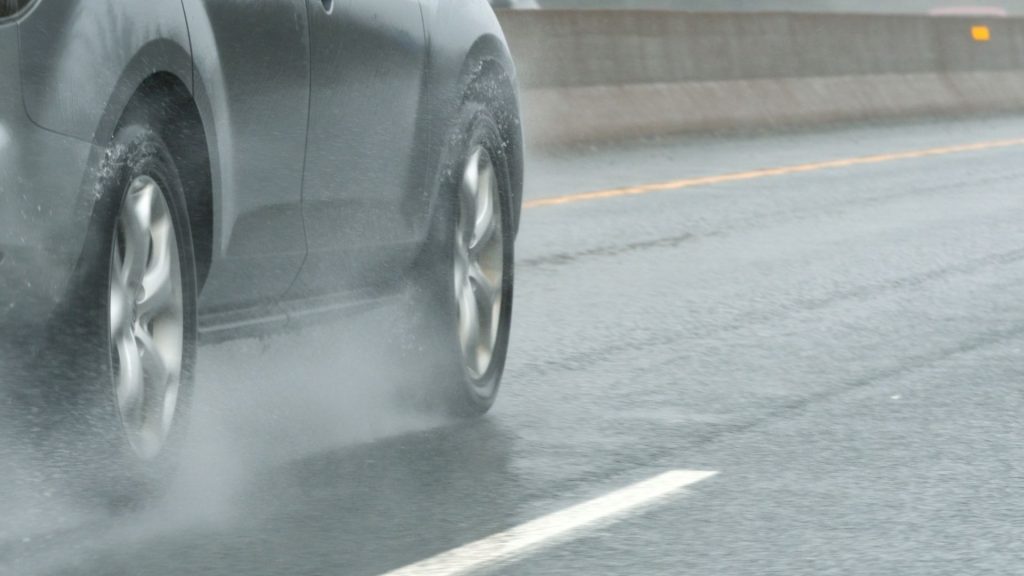
One thing to have in mind is that cruise control shouldn’t be used while it’s raining, or on snowy roads. Driving at certain speed levels could cause hydroplaning as the tires could lose their grip on the road. So, it’s best to put your foot back on the gas pedal and adjust the driving speed accordingly during bad weather.
On the other hand, it might seem like you have enough grip even during rain, but it all changes when you reach a part of the road soaked in water. To prevent any sliding or hydroplaning due to consistently fast driving speeds, turn off the cruise control during bad weather.
Eventually, we’ve dealt with the matter of whether cruise control saves gas. As much as it’s beneficial on highways and routes that require little to no turns, cruise control could be dangerous during bad weather. So, as much as you use it responsibly and still keep your eyes on the road, you should be able to save some fuel as well.
Adaptive cruise control systems in modern cars can even recognize another vehicle in case you get too close to it, but it’s still best if you use cruise control with a dose of precaution.

Filip is a lifelong car enthusiast with over 3 years of experience writing about cars and had worked as a mechanic apprentice for over 5 years, gaining hands-on expertise in automotive mechanics. At REREV, he combines his passion for cars with his comprehensive knowledge to provide readers with a unique blend of technical insight and engaging storytelling that sets the bar high for automotive content.
- Editorial Guidelines
Car Insights
- Years to avoid
- Collections

- Local Giving
- Cenex ® TOP TIER™ Detergent Gasoline
- Cenex Roadmaster XL ® Premium Diesel
- Cenex ® Winterized Premium Diesel
- Cenex ® Ruby FieldMaster Premium Diesel ®
Renewable Fuels
- E-85/Other Blends And BioDiesel Blends
Fuel Services
- Automated Fuel Delivery
Featured Article
- Tracking Energy
Additional Information
- Cenex Total Protection Plan ®
- Safety Data Sheet Library
- Product Data Sheet Library
Engine Oils
- Diesel Engine Oils
- Gasoline Engine Oils
- Natural Gas Engine Oils
Hydraulic Oils
- Tractor Hydraulics Fluids
- Industrial Hydraulic Fluids
Transmission and Gear Oils
- Automatic Transmission Fluid
- Heavy Duty Transmission Fluid
Important Resources
- Equipment Lookup
Using Propane
- Residential
- Agriculture
- Transportation
- Propane Safety
Featured Articles
- Play it Safe With the Grill This Summer
- Flame Weeding. Powered by Propane
Corporate Information
- Energy Distribution
Cenex ®
- Join The Cenex ® Family
- Cenexperts ® Blog
Cenex ® Guarantee
- CenexExperts ® Blog

Fostering Community Connection Through Inclusive Sports
Read Blog Post
Does cruise control really save gas?
- By: Jenny Kraus
- Senior Marketing Specialist, CHS Refined Fuels
- in General Interest

For many of us, using cruise control comes second nature on a long drive. From speed-setting to automatic braking, it’s a handy feature to make lengthy trips a little bit easier. But have you ever wondered how cruise control affects your fuel efficiency?
It’s commonly assumed that cruise control saves on gas. As the thinking goes, by maintaining a steady speed, cruise control moderates fuel consumption more effectively than a driver manually pressing and releasing the gas pedal.
However, according to Autolist , that isn’t always the case. While it’s generally true that cruise control can improve fuel economy across long, flat stretches of road, there are no hard and fast rules.
How well your cruise control performs under different conditions depends on the make and model of your vehicle. No matter what you’re driving, though, keep these benefits in mind when determining whether to use cruise control on your next drive.
- It’s easy to use. Most systems have an on and off button in addition to buttons that allow you to change the speed in one-mph increments. In newer or more advanced systems, there may also be features like adaptive cruise control, which helps keep your car at a safe distance from others on the road.
- It can improve your focus. When the cruise control is set, you’re more available to focus on the road instead of worrying about maintaining a consistent speed. And since you don’t need to keep your foot on the gas, cruise control can also make driving more comfortable.
- It can help reduce speeding tickets. There are no guarantees, but if you’re notorious for racking up speeding tickets, cruise control may be your answer. Especially when used on the highway, cruise control can help tame your inner lead foot.
When is cruise control inefficient?
While cruise control can be helpful in many cases, there are occasions when you may not want to use it, including drives through hilly or rocky terrain. Many systems are unable to keep up with the changing inclines, which could decrease your fuel efficiency. In addition, although not related to fuel efficiently, remember that cruise control could be compromising when used in weather conditions like rain, ice and snow.
While cruise control systems vary, one thing that doesn’t is the need for quality fuels like CENEX TOP TIER™ DETERGENT GASOLINE . Find Cenex TOP TIER™ Detergent Gasoline at CENEX LOCATIONS NEAR YOU .
Spread The Word
Back to Cenexperts ® Blog

Providing Essential Food Resources to Children in Need
Find out how the Cenex Hometown Pride grant allowed the Hawley, Minn. based REACH® Inc. provides essential food resources to children in need.

Filling an Essential Community Gap to Support Small Town Families
Learn how a Hometown Pride Grant will help Kids Academy Daycare Center provide much-needed accessible childcare for its community.

What octane ratings really mean for your car
If you’ve ever contemplated which grade of gasoline to put in your tank, you’re not alone. Learn more about octane ratings and what they mean for your engine.

Battling Food Insecurity for Neighbors in Need
Learn how the Hometown Pride Grant will help the Backus Community Café provide solutions to hunger for its community.
AI-Assisted Car Shopping
Does cruise control save gas.

Source: Pixabay
Cruise control is a popular car feature that many take advantage of on the road. It’s convenient, but there might be other benefits to this vehicle addition. If you’ve ever used cruise control, there’s a popular question you might have - does cruise control save gas? Will cruise control help you go farther?
We’ve got the answer right here! In this article, we’ll talk about if cruise control saves gas, as well as the impact it can have on your and your car. Does cruise control save gas? Let’s dive right into it.
Does cruise control save gas? According to motortrend.com , there is little doubt that cruise control saves gas. A Canadian study revealed that varying your speed between 46 and 56 miles every 18 seconds decreases your efficiency by about 20%. Cruise control helps to keep your variation in check.
If you want a way to save gas, think about cruise control. Of course, some terrains and conditions are better for cruise control than others. We’ll dive into this next, so you know the best time and place to implement this feature for gas-saving purposes.
BE CERTAIN YOU’RE GETTING THE BEST DEAL
CoPilot searches your area and lets you know if there’s a better deal on a similar vehicle nearby, so you’re always certain you got the best deal possible. The CoPilot app is the smartest way to buy a car.
When is the Best Time to Utilize Cruise Control?
There is a time and a place to utilize cruise control. When asking the question - does cruise control save gas? It’s vital to add some specifications for this statement. It doesn’t save gas in all circumstances.
According to thedifferenceisclear.com , some of the best times to utilize cruise control include:
- Clear, dry weather conditions
- Empty or spaced-out roads
- Smooth terrain
These conditions provide the most effective cruise control circumstances.
Cruise control works to keep a speed limit in between a certain range. If you’re going uphill or downhill, it has to work that much harder to keep your speed at the same pace. These conditions cause more gas to leave your engine, rather than less. Does cruise control save gas? Yes, on flat and clear surfaces in beautiful weather.
How Does Cruise Control Save Gas?
We know that cruise control saves gas, and we know the best conditions to utilize this feature in reality. How does it save gas? What is it that cruise control brings to the table?
According to kia.com , there is a specific way that cruise control works to save gas when you drive. Cruise control saves gas by maintaining a level speed on flat ground. Because of this, the driver doesn’t need to brake or accelerate as often. Lack of foot on the pedal means less gas is drained from the vehicle as the car moves down the road.
Standard cruise control works best on flat terrain, as discussed above. More advanced versions of cruise control have been updated to work on an inclined surface. However, this technique uses more gas than utilizing the feature on a flat surface.
Is Using Cruise Control Bad for Your Car?
Cruise control might save gas, but you might wonder if it’s good for your car. After all, many excessive features seem like a good idea but prove to be more harmful than good for your vehicle. What about cruise control? Is it bad or good when looking at the driving experience as a whole?
While cruise control is not inherently bad for your car, there are some definitive pros and cons that come with the feature. These are important to understand as a driver, as your safety is on the line.
Let’s go over the downsides and the upsides of cruise control to give you a better idea of what is at stake with this feature and if it’s the best choice for you. Some may love what cruise control offers, while others find the downsides too off-putting to ignore.
WHAT TO DO IF A DEALER REFUSES TO CANCEL EXTENDED WARRANTY
Car buying can occasionally be frustrating, especially if you’re purchasing your vehicle through a dealership. We’re here to tell you how to navigate a situation in which a dealer refuses to cancel your extended warranty .
Downsides to Cruise Control
Unfortunately, some downsides come with cruise control. It saves gas, but the feature should not be judged based on that one component. It’s critical to know what you’re getting into before you use a feature on the open road.
According to bottarolaw.com , some of the downsides to cruise control include:
- It can impair your reaction time, causing too much relaxation on the road and preventing braking speed
- It can waste gas if used wrong, such as on rough terrain on an incline
- It can create drowsy driving if the driver stops paying attention and leaves everything up to the vehicle
These can cause harm to you or your vehicle on the road if you’re not careful.
Now that we’ve gone over the bad, we should talk about the good. Cruise control can damage you and your car, but it can also prove to be a quality addition to the average driver’s life.
Upsides of Cruise Control
Just as there is bad, there is good. It’s vital to look at both sides of the puzzle when deciding whether features like cruise control are ideal for you to utilize on the road.
According to bottarolaw.com , some of the upsides to cruise control include:
- It makes the average driver more relaxing and comfortable
- It saves gas when used on flat terrain with minimal weather obstructions
- It prevents speeding if placed at a proper mileage range
These can improve your driving experience tremendously.
Cruise control can provide a relaxing driving experience, and it can also keep you safe. All these benefits come on top of the fact that cruise control saves gas when driving long distances. There are so many ways to win.
THE BEST TWO-SEATER CARS
If you’re in the market for a speedy two-seater, we’ve got you covered. Check out our list of the best two-seater cars on the market today.
Cruise control is a unique feature that comes equipped on most modern cars. With cruise control, you can save gas on flat, dry terrain. It can provide a comfortable driving experience and even prevent speeding in some cases.
Although there are some significant drawbacks to cruise control, one thing it’s been proven to do is save gas. If you want to save money on your travels and get farther on one tank, cruise control is your best friend. Does cruise control save gas? It does if used in the right circumstances.
Get a Curated List of the Best Used Cars Near You
The CoPilot car shopping app is the easiest way to buy a car. Tell us what you’re looking for and we’ll search the inventories of every dealership in your area to make you a personalized list of the best car listings in your area.
Only looking for newer models? CoPilot Compare is the search engine for nearly-new cars . Only see cars five years or newer with low mileage — CoPilot Compare is the best way to find off-lease, early trade-in, and CPO cars.
The best part? CoPilot is built using the same technology that dealerships use to buy and sell their inventories, so we have more info on each vehicle than competitors. CoPilot doesn’t work with dealerships, so there are no sponsored posts or other shady practices — just the most info on the best cars. Check out our About Us page to see how CoPilot works.
Used for sale near me
Popular car searches.
Used Makes and Models
Used Cars for Sale by City
Why Use CoPilot?
Shop and buy your next car with confidence. CoPilot searches every car at every dealer, every day, and ranks them based on what matters to you.
When you shop for a new or used car, CoPilot helps you know more. We search every car at every dealer so you don't have to, we give you data and insights you won't find anywhere else, and we rank every car so it's easy to find the best car at the best price.
When you're ready to buy your next car, CoPilot helps you make sure you never get taken advantage of at the dealership. Would you like to know more than the salesperson? CoPilot helps you avoid any tricks, traps, and scams. Know how and what you can negotiate. With CoPilot, you'll save time, money, and frustration.

© 2022 CoPilot. All Rights Reserved.
The Federal Register
The daily journal of the united states government, request access.
Due to aggressive automated scraping of FederalRegister.gov and eCFR.gov, programmatic access to these sites is limited to access to our extensive developer APIs.
If you are human user receiving this message, we can add your IP address to a set of IPs that can access FederalRegister.gov & eCFR.gov; complete the CAPTCHA (bot test) below and click "Request Access". This process will be necessary for each IP address you wish to access the site from, requests are valid for approximately one quarter (three months) after which the process may need to be repeated.
An official website of the United States government.
If you want to request a wider IP range, first request access for your current IP, and then use the "Site Feedback" button found in the lower left-hand side to make the request.

- Visit Our Blog about Russia to know more about Russian sights, history
- Check out our Russian cities and regions guides
- Follow us on Twitter and Facebook to better understand Russia
- Info about getting Russian visa , the main airports , how to rent an apartment
- Our Expert answers your questions about Russia, some tips about sending flowers

Russian regions
- Belgorod oblast
- Stary Oskol
- Bryansk oblast
- Ivanovo oblast
- Kaluga oblast
- Kostroma oblast
- Kursk oblast
- Lipetsk oblast
- Moskovskaya oblast
- Orlovskaya oblast
- Ryazan oblast
- Smolensk oblast
- Tambov oblast
- Tula oblast
- Tver oblast
- Vladimir oblast
- Voronezh oblast
- Yaroslavl oblast
- Map of Russia
- All cities and regions
- Blog about Russia
- News from Russia
- How to get a visa
- Flights to Russia
- Russian hotels
- Renting apartments
- Russian currency
- FIFA World Cup 2018
- Submit an article
- Flowers to Russia
- Ask our Expert
Stary Oskol city, Russia
The city of Belgorod oblast .
Stary Oskol - Overview
Stary Oskol is a city in Russia located in the Belgorod region, standing on the banks of the Oskol River, about 142 km northeast of Belgorod, 632 km south of Moscow.
The population of Stary Oskol is about 222,600 (2022), the area - 134 sq. km.
The phone code - +7 4725, the postal codes - 309500-309518.
Stary Oskol city flag
Stary oskol city coat of arms.
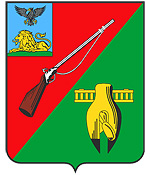
Stary Oskol city map, Russia
History of stary oskol.
In 1300, there was a village called Ugly on the the territory of the present city. Today, it is one of the districts of Stary Oskol. At that time, the village was part of the Grand Duchy of Lithuania and was a border crossing point on the border with the Golden Horde.
The settlement of Oskol was founded by Russian Tsar Fyodor Ioanovich’s order (Ivan’s the Terrible son) to protect the southern borders of the Russian kingdom in 1593. The bulk of the population were peasants and the military.
In 1617, the town was burned by the Poles. In 1625, 1642 and 1677, the Crimean Tatars approached Stary Oskol, but could not capture it. The town was renamed Stary Oskol (meaning Old Oskol) in 1655, when the town of Tsaryov-Alexeyev, located down the river, was renamed Novy Oskol (New Oskol). Fortifications of the town existed until the 18th century.
More Historical Facts…
Gradually, Stary Oskol turned into peaceful, commercial and merchant town - the center of an agricultural district. Industrial production was represented mainly by enterprises on processing agricultural products.
In 1780, the town got its coat of arms. In 1784, Stary Oskol like most Russian towns of that time was rebuilt according to a new plan signed by Empress Catherine II. A large number of brick houses were built, mostly two-story buildings. The historic center of Stary Oskol has been preserved to our time.
In the second half of the 19th century, the town had a wide network of schools, libraries, reading rooms, printing, secondary schools. In 1894, construction of the railway began, trade and industry began to develop rapidly.
Until the 1930s, there were eleven Orthodox churches in Stary Oskol. During the Second World War, Stary Oskol was occupied by the Germans from July 2, 1942 to February 5, 1943. In 1954, the city became part of the newly formed Belgorod region.
In the late 1960s - early 1970s, in connection with the active development of the Kursk Magnetic Anomaly (the most powerful iron ore basin in the world), Stary Oskol became a major center of iron and steel industry.
Stary Oskol was declared a city of three top-priority Komsomol construction projects. The largest enterprises: Lebedinsky Mining and Processing Plant, Stoilensky Mining and Processing Plant, Oskolsky Electrometallurgical Plant became not only the city-forming enterprises, but also the largest industrial enterprises of the country. Stary Oskol experienced a new birth.
Today, Stary Oskol is a rapidly developing city, one of the leading mining and metallurgical centers of Russia.
Stary Oskol views
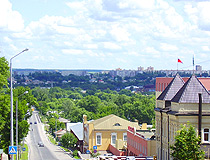
Stary Oskol cityscape
Author: Nikolai Ivanov
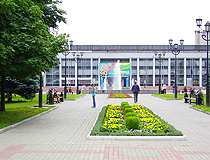
The fountain on Friendship Boulevard in Stary Oskol
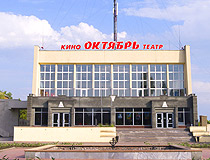
October movie theater in Stary Oskol
Author: Roman Riapolov
Stary Oskol - Features
The coat of arms of Stary Oskol is a shield divided in half diagonally, in the red field there is a rifle, in the green field - a golden plow. It reflects both military and agricultural importance of the town.
Stary Oskol is among Russian cities with the youngest population. The average age of its citizens is about 35 years. The main reason lies in the history of the city. In the second half of the 20th century, a large number of members of the Young Communist League came to Stary Oskol to participate in the construction of large industrial enterprises.
Unique reserves of iron ore, developed industry and infrastructure, high scientific, technical and industrial potential, fertile land form the basis of Stary Oskol economy.
The main branches of local industry are mining, ferrous metallurgy, machine building and metalworking, building materials, food industry. There are more than 140 large and medium industrial enterprises, which employ more than 80 thousand people.
Attractions of Stary Oskol
The city has more than a dozen Orthodox churches and chapels. Alexander Nevsky Cathedral (Tokareva Street, 4/1) is the main church of Stary Oskol. St. Trinity Church (Bolshevistskaya Street, 17/15), built in 1730, is the oldest church in the city.
The Zoo was opened in Stary Oskol in 2008. Bears, lions, tigers, monkeys, wolves, camels, ostriches, and other species of birds and animals live there.
Museum of Local Lore (Lenina Street, 50). The museums, founded in 1923, has exhibitions about the history of Stary Oskol. It is located in a building which is a monument of history and culture of the 19th century once owned by the merchants and brothers Likhutins.
The museum organizes tours of the city and the area including visits to an ancient Russian settlement of Kholki, an underground monastery in Melovy mountains, and a biosphere reserve “Yamskaya steppe”.
Art Museum (Lenina Street, 57). The collection of local masters of folk clay toys (O.M.Goncharova and N.M.Goncharova) is a real pearl of the museum. Stary Oskol folk clay toys production was known from the end of the 18th century.
House Museum of Vasily Yeroshenko (Yeroshenko Street, 15). Yeroshenko’s life is a living legend for blind people not only in Russia but also abroad. He encourages disabled people, supports them with his talent, helps them on their ways to improve techniques. Yeroshenko spoke 12 foreign languages and was the professor of universities in Tokyo and Beijing, he became a classic of Japan literature for children.
Stary Oskol city of Russia photos
Pictures of stary oskol.
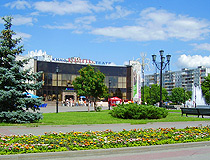
Byl movie theater in Stary Oskol
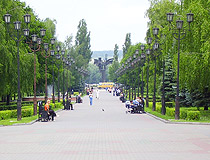
Friendship Boulevard in Stary Oskol
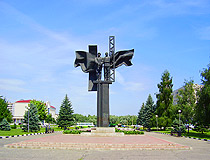
The Monument to Soviet-Bulgarian friendship in Stary Oskol
Sights of Stary Oskol
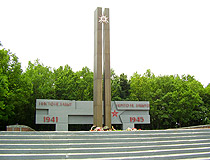
The memorial complex Ataman Forest in Stary Oskol
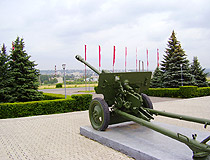
Cannon monument in Stary Oskol

Church of the Nativity in Stary Oskol
The questions of our visitors
The comments of our visitors.
- Currently 2.82/5
Rating: 2.8 /5 (153 votes cast)

- Bahasa Indonesia
- Eastern Europe
Information
Find all the information of Stary Oskol or click on the section of your choice in the left menu.
- Update data
Stary Oskol Demography
Information on the people and the population of Stary Oskol.
Stary Oskol Geography
Geographic Information regarding City of Stary Oskol .
Stary Oskol Distance
Distance (in kilometers) between Stary Oskol and the biggest cities of Russia.
Stary Oskol Map
Locate simply the city of Stary Oskol through the card, map and satellite image of the city.
Stary Oskol Nearby cities and villages
Stary oskol twin towns, sister cities.
The City of Stary Oskol has international agreements with its different pairings.
Stary Oskol Zone
Time zone of Stary Oskol.
Stary Oskol Weather
Weather forecast for the next coming days and current time of Stary Oskol.
Stary Oskol Sunrise and sunset
Find below the times of sunrise and sunset calculated 7 days to Stary Oskol.
Stary Oskol Hotel
Our team has selected for you a list of hotel in Stary Oskol classified by value for money. Book your hotel room at the best price.
Stary Oskol Nearby
Below is a list of activities and point of interest in Stary Oskol and its surroundings.
Nuclear power plant
Stary oskol page.

- Information /Russian-Federation--Belgorod--Stary-Oskol#info
- Demography /Russian-Federation--Belgorod--Stary-Oskol#demo
- Geography /Russian-Federation--Belgorod--Stary-Oskol#geo
- Distance /Russian-Federation--Belgorod--Stary-Oskol#dist1
- Map /Russian-Federation--Belgorod--Stary-Oskol#map
- Nearby cities and villages /Russian-Federation--Belgorod--Stary-Oskol#dist2
- Twin towns, Sister cities /Russian-Federation--Belgorod--Stary-Oskol#twintown
- Zone /Russian-Federation--Belgorod--Stary-Oskol#hour
- Weather /Russian-Federation--Belgorod--Stary-Oskol#weather
- Sunrise and sunset /Russian-Federation--Belgorod--Stary-Oskol#sun
- Hotel /Russian-Federation--Belgorod--Stary-Oskol#hotel
- Nearby /Russian-Federation--Belgorod--Stary-Oskol#around
- Page /Russian-Federation--Belgorod--Stary-Oskol#page
- Terms of Use
- Copyright © 2024 DB-City - All rights reserved
- Change Ad Consent Do not sell my data

EAF expansion
As of May 2021, Metalloinvest has announced plans to build an additional EAF (EAF #5) and a new Ladle Furnace (LF #4) and selected Danieli as the supplier. The EAF #5 was scheduled to be commissioned in 2023 and would increase the plant's production capacity by an additional 1.2 MTPA. [2]
As of October 2023, there have not been any updates about the project.
Plant Details
Table 1: general plant details, table 2: ownership and parent company information, table 3: process and products, table 4: crude steel production capacities (thousand tonnes per annum), table 5: crude iron production capacities (thousand tonnes per annum), table 6: upstream products production capacities (thousand tonnes per annum), table 7: actual crude steel production by year (thousand tonnes per annum), table 8: actual crude iron production by year (thousand tonnes per annum), articles and resources, additional data.
To access additional data, including an interactive map of steel power plants, a downloadable dataset, and summary data, please visit the Global Steel Plant Tracker on the Global Energy Monitor website.
- ↑ "METALLOINVEST SELECTS DANIELI TO BUILD NEW ELECTRIC ARC FURNACE AND LADLE FURNACE AT OEMK" . Danieli . May 5, 2021 . Retrieved Mar 22, 2022 .
- ↑ 3.0 3.1 3.2 3.3 3.4 3.5 3.6 3.7 3.8 https://web.archive.org/web/20220112164748/https://www.metalloinvest.com/en/business/steel/oemk/ . Archived from the original on 12 January 2022. {{ cite web }} : Missing or empty |title= ( help )
- ↑ https://web.archive.org/web/20220120212348/https://oskol.city/news/society/73476/ . Archived from the original on 20 January 2022. {{ cite web }} : Missing or empty |title= ( help )
- ↑ 5.0 5.1 (PDF) https://web.archive.org/web/20221130215516/https://anoire.center/wp-content/uploads/2022/08/iron.pdf . Archived from the original (PDF) on 30 November 2022. {{ cite web }} : Missing or empty |title= ( help )
- ↑ 6.00 6.01 6.02 6.03 6.04 6.05 6.06 6.07 6.08 6.09 6.10 6.11 6.12 6.13 6.14 https://web.archive.org/web/20210624061453/https://www.danieli.com/en/news-media/news/metalloinvest-selects-danieli-build-new-electric-arc-furnace-and-ladle-furnace-oemk_37_637.htm . Archived from the original on 24 June 2021. {{ cite web }} : Missing or empty |title= ( help )
- ↑ 7.0 7.1 https://web.archive.org/web/20220331214107/https://www.metalloinvest.com/partners/quality-system/certificates/ . Archived from the original on 31 March 2022. {{ cite web }} : Missing or empty |title= ( help )
- ↑ 8.0 8.1 https://web.archive.org/web/20211025180601/https://www.vnedra.ru/glavnaya-tema/metalloinvest-strategiya-povysheniya-kachestva-produkczii-i-obespecheniya-ustojchivogo-sbyta-13583/ . Archived from the original on 25 October 2021. {{ cite web }} : Missing or empty |title= ( help )
- ↑ https://web.archive.org/web/20220129010141/https://metallobazy.ru/factory/46 . Archived from the original on 29 January 2022. {{ cite web }} : Missing or empty |title= ( help )
- ↑ 10.0 10.1 10.2 10.3 10.4 10.5 10.6 https://web.archive.org/web/20220126174142/https://www.metalloinvest.com/en/media/press-releases/196162/ . Archived from the original on 26 January 2022. {{ cite web }} : Missing or empty |title= ( help )
- ↑ https://web.archive.org/web/20220127013232/https://www.metalloinvest.com/en/media/press-releases/10672/ . Archived from the original on 27 January 2022. {{ cite web }} : Missing or empty |title= ( help )
- ↑ https://web.archive.org/web/20220320173526/https://www.midrex.com/about-midrex/midrex-plants/ . Archived from the original on 20 March 2022. {{ cite web }} : Missing or empty |title= ( help )
- ↑ 13.0 13.1 13.2 https://bel.ru/news/2021-05-01/metalloinvest-postroit-novuyu-staleplavilnuyu-pech-na-kombinate-v-starom-oskole-321989 . {{ cite web }} : Missing or empty |title= ( help )
- ↑ 14.00 14.01 14.02 14.03 14.04 14.05 14.06 14.07 14.08 14.09 14.10 14.11 14.12 14.13 14.14 14.15 14.16 14.17 (PDF) https://web.archive.org/web/20211008070717/https://www.metalloinvest.com/upload/iblock/9c1/metalloinvest_ar_2020.pdf . Archived from the original (PDF) on 08 October 2021. {{ cite web }} : Check date values in: |archive-date= ( help ) ; Missing or empty |title= ( help )
- ↑ 15.0 15.1 15.2 15.3 15.4 15.5 https://www.midrex.com/company-news/midrex-plants-with-4th-quarter-anniversaries-2/ . {{ cite web }} : Missing or empty |title= ( help )
- ↑ 16.0 16.1 16.2 16.3 (PDF) https://www.midrex.com/wp-content/uploads/Midrex-2020-DFM2QTR-Final.pdf . {{ cite web }} : Missing or empty |title= ( help )
- ↑ https://web.archive.org/web/20240130192323/https://abireg.ru/newsitem/89221/ . Archived from the original on 30 January 2024. {{ cite web }} : Missing or empty |title= ( help )
- ↑ 18.0 18.1 18.2 https://web.archive.org/web/20220531023149/https://www.metalloinvest.com/investors/operating-results/ . Archived from the original on 31 May 2022. {{ cite web }} : Missing or empty |title= ( help )
- ↑ 19.0 19.1 19.2 19.3 (PDF) https://www.metalloinvest.com/upload/iblock/919/metalloinvest_go-_-17.05-_1_.pdf . {{ cite web }} : Missing or empty |title= ( help )
- ↑ 20.0 20.1 20.2 20.3 https://web.archive.org/web/20220402100106/https://www.metalloinvest.com/investors/reports/ . Archived from the original on 02 April 2022. {{ cite web }} : Check date values in: |archive-date= ( help ) ; Missing or empty |title= ( help )
- Company website
- https://ru.wikipedia.org/wiki/%D0%9E%D1%81%D0%BA%D0%BE%D0%BB%D1%8C%D1%81%D0%BA%D0%B8%D0%B9_%D1%8D%D0%BB%D0%B5%D0%BA%D1%82%D1%80%D0%BE%D0%BC%D0%B5%D1%82%D0%B0%D0%BB%D0%BB%D1%83%D1%80%D0%B3%D0%B8%D1%87%D0%B5%D1%81%D0%BA%D0%B8%D0%B9_%D0%BA%D0%BE%D0%BC%D0%B1%D0%B8%D0%BD%D0%B0%D1%82 Wikipedia
- Steel plants
- Steel plants in Russia
- Operating steel plants
- CS1 maint: url-status
- CS1 errors: missing title
- CS1 errors: bare URL
- CS1 errors: dates
Russia begins city evacuation as it swaps cross-border strikes with Ukraine
Residents of Belgorod are moved away from the border while Ukraine deflects another barrage of drones and missiles.

Russia has partially evacuated Belgorod and has requests for further removals following Ukrainian air strikes on the border city.
About 300 residents from the city have been temporarily moved to safety further from the border, Belgorod region’s Governor Vyacheslav Gladkov said on Monday. The evacuation comes as Russia and Ukraine increasingly trade drone and missile strikes.
Keep reading
Russia-ukraine war: list of key events, day 684, putin praises russian ‘defenders’ as ukraine deflects another barrage, russia and ukraine target each other’s defence industry amid land stalemate, ukraine says russian missile attack kills 11 in eastern town.
“Some 300 residents of Belgorod, who decided to temporarily evacuate, are at the moment being housed in temporary shelter centres in Stary Oskol, Gubkin and the Korochansky district,” which are further from the border, Gladkov said in a video posted on Telegram.
Meanwhile, Ukraine reported on Monday that at least four people were killed as Russia launched more than 50 missiles and drones in the early hours.
With the war on the front line in eastern Ukraine bogged down in winter trenches, Russia has concentrated on air strikes against Ukraine’s infrastructure, and what it says are military targets. However, civilian areas have been regularly hit.
In response, Kyiv has begun sending its own drones and missiles at targets in the occupied east, as well as inside Russia itself.
On December 30, 25 people were killed in Belgorod. It was the deadliest civilian toll in Russia since Moscow invaded its neighbour in February 2022.
Ukraine has launched further attacks since, spreading panic in the city, which sits about 30km (19 miles) from the border.
The governor offered residents the option of evacuation on Friday.
“Over the past 24 hours, we received 1,300 requests to send Belgorod children to school camps away from the city, in other regions,” Gladkov said.
Moscow strikes again
Meanwhile, Russia continued its attacks on Ukraine on Monday, hitting residential areas and commercial sites as it launched more than 50 missiles and drones.
At least four civilians were killed and some 30 injured, authorities reported, in the attacks in central and western parts of the country, as well as near the front lines.
Ukraine’s air force said it had shot down 18 out of 51 projectiles overnight, including 32 cruise missiles and eight Iranian-made Shahed drones.
“Critical infrastructure facilities, industrial civilian and military facilities were attacked,” the air force said.
A shopping centre and more than two dozen private buildings were damaged in the southern city of Kryvyi Rih, Governor Serhiy Lysak reported, with one killed.
“The mad enemy once again struck civilians,” Lysak wrote on the Telegram messaging app. “Directed missiles at people.”
In the eastern city of Kharkiv, an industrial site and an educational facility were damaged in at least four missile strikes, Governor Oleh Synyehubov said.
Four people were wounded in the southeastern city of Zaporizhzhia, where Governor Yuriy Malashko reported five explosions and said residential areas had been hit.
Officials in the western Khmelnytskyi region reported at least six blasts but gave no immediate details of the damage. A senior presidential adviser said one person had been killed, according to the Reuters news agency.
All of Ukraine was under air raid alert for more than three hours on Monday.

IMAGES
VIDEO
COMMENTS
A Natural Resources Canada study found that setting the cruise control at 80 kph (49.7 mph) versus cycling from 75 to 85 kph (46.6 to 52.8 mph) every 18 seconds consumes 20 percent less fuel (and ...
Cruise control is designed to help people traveling long distances drive comfortably, but it can also help save gas money. According to Progressive, cruise control works by letting the driver "set a speed for your car to maintain even if you take your foot off the gas.". Your car will remain at a constant speed for the duration of time you ...
Does Cruise Control Save Gas? Exploring Fuel-Saving Tips and Tricks. Whether gas is $5 per gallon or $2 per gallon, there's no reason to waste any of it with all of the advanced technology at our disposal. Auto stop-start, cylinder deactivation, fuel injection, and electronic ignition all work together to provide a measurable increase in fuel ...
It can lower your gas mileage by roughly 15% to 30% at highway speeds.". The site is even less specific about cruise control: "Using cruise control on the highway helps you maintain a constant ...
Moreover, aggressive driving (speeding, rapid acceleration, and braking) wastes a lot of gas. The federal website for fuel economy states that the decrease can be around 15% to 30% at highway speeds. In all the instances above, cruise control is detrimental to fuel economy. It negates the human factor and brings the speed under control, which ...
When you engage cruise control, your vehicle maintains a constant speed, which helps optimize your fuel consumption. By eliminating unnecessary acceleration and deceleration, cruise control ensures that your engine operates at a consistent level of efficiency. This can lead to significant savings at the gas pump, especially during long highway ...
We asked AAA's Robert Sinclair Jr., "Does cruise control save gas?" and he said he doesn't believe cruise control is helpful in terms of fuel economy. "From the outset, cruise control was reputed as a gas saver by maintaining a constant speed and avoiding the gas guzzling on-the-gas, off-the-gas driving style of those in a hurry ...
1. Saves fuel. The main benefit of cruise control is that it saves on gas by keeping the car moving at a constant speed. However, this fuel-efficient system offers more advantages than just cutting down on your overall fuel bills. Consider four other advantages that cruise control provides: 2. Reduces Fatigue.
The most basic of which is a standard, speed-limiting cruise control. As its name would suggest, a speed-limiting cruise control essentially governs a vehicle's speed at a preset rate, thereby maintaining this speed under a variety of conditions. Over the past decade, adaptive cruise control has also gained immense popularity.
That's probably the thing that it's really most designed for," Larkin said. It's also an opportunity to improve gas mileage. Natural Resources Canada did a study in which a car was set to about 50 ...
As drivers seek ways to optimize their fuel consumption, we delve into the science behind cruise control's impact on gas mileage. Let's explore the facts to determine if this widely-used feature is indeed a fuel-saving hero. Does Cruise Control Use More Fuel? Cruise control can save 14% on fuel on highways and 7% on gas on city streets ...
Cruise control is a familiar feature in many vehicles, designed to maintain a steady speed set by the driver. ... and vehicle type. Let's explore how cruise control affects gas usage and under which circumstances it can offer the best benefits. JUMP TO TOPIC. 1 The Basics of Cruise Control. 1.1 Understanding Cruise Control Mechanics; 1.2 ...
The excessive increases and decreases in speed could cause vehicles to consume up to 20 percent more fuel than they might by using the gas and brake pedals. However, in general, adaptive cruise control usually helps drivers conserve fuel, save money, and reduce total car ownership costs. Coupling this feature with driving in the right-hand lane ...
Yes, cruise control can save roughly 7-14% on gas, making it a more fuel-efficient way to drive. Because a steady consistent speed is less demanding on the engine than sudden acceleration or deceleration. The result is less fuel consumed per mile. If you're like most car owners, you find yourself asking a lot of questions about how to save ...
It can lower your gas mileage by roughly 15% to 30% at highway speeds and 10% to 40% in stop-and-go traffic. 1,2. Driver feedback devices can help you drive more efficiently. ... Use Cruise Control. Using cruise control on the highway helps you maintain a constant speed and, in most cases, will save gas.
Edmunds ran a test to see if cruise control saves gas consumption. They concluded that it does save gas and they found that it can save up to 14% with and average of 7%. According to Edmunds, cruise control saves gas by smoothing out the drive since the diver is not accelerating or braking and prevents nervous surging of RPMs.
Yes, cruise control saves gas and could even result in up to 20% better fuel economy if properly used. Still, there's much more about cruise control and gas mileage than meets the eye, and our team set out to explore. We'll give you all the details on how you can save fuel with this driving function, and provide insight into how it works.
It's commonly assumed that cruise control saves on gas. As the thinking goes, by maintaining a steady speed, cruise control moderates fuel consumption more effectively than a driver manually pressing and releasing the gas pedal. However, according to Autolist, that isn't always the case. While it's generally true that cruise control can ...
Cruise control saves gas by maintaining a level speed on flat ground. Because of this, the driver doesn't need to brake or accelerate as often. ... It can waste gas if used wrong, such as on rough terrain on an incline; It can create drowsy driving if the driver stops paying attention and leaves everything up to the vehicle;
Local gas prices were on cruise control this week, as the average cost per gallon in Bradford remained exactly the same as last Monday at $3.897. AAA East Central said the average price in Western ...
The Environmental Protection Agency (EPA) is promulgating new greenhouse gas (GHG) emissions standards for model year (MY) 2032 and later heavy-duty highway vehicles that phase in starting as early MY 2027 for certain vehicle categories. ... (ii) of § 1036.545—Generic Example of Output Matrix for Cruise Cycle Vehicle Configurations; PART ...
In total, around 170 drones, more than 30 cruise missiles and more than 120 ballistic missiles were launched at Israel by Iran overnight Saturday, the military said.
Stary Oskol is a city in Russia located in the Belgorod region, standing on the banks of the Oskol River, about 142 km northeast of Belgorod, 632 km south of Moscow. The population of Stary Oskol is about 222,600 (2022), the area - 134 sq. km. The phone code - +7 4725, the postal codes - 309500-309518.
Geographic Information regarding City of Stary Oskol. Stary Oskol Geographical coordinates. Latitude: 51.3, Longitude: 37.8333. 51° 18′ 0″ North, 37° 49′ 60″ East. Stary Oskol Area. 19,900 hectares. 199.00 km² (76.83 sq mi) Stary Oskol Altitude.
Metalloinvest OEMK steel plant. This article is part of the Global Steel Plant Tracker, a project of Global Energy Monitor. Metalloinvest OEMK steel plant (ОЭМК им. А.А. Угарова (Russian)), also known as Oskol Electrometallurgical Plant JSC, is an electric arc furnace (EAF) steel plant operating in Stary Oskol, Belgorod, Russia.
Russia has partially evacuated Belgorod and has requests for further removals following Ukrainian air strikes on the border city. About 300 residents from the city have been temporarily moved to ...